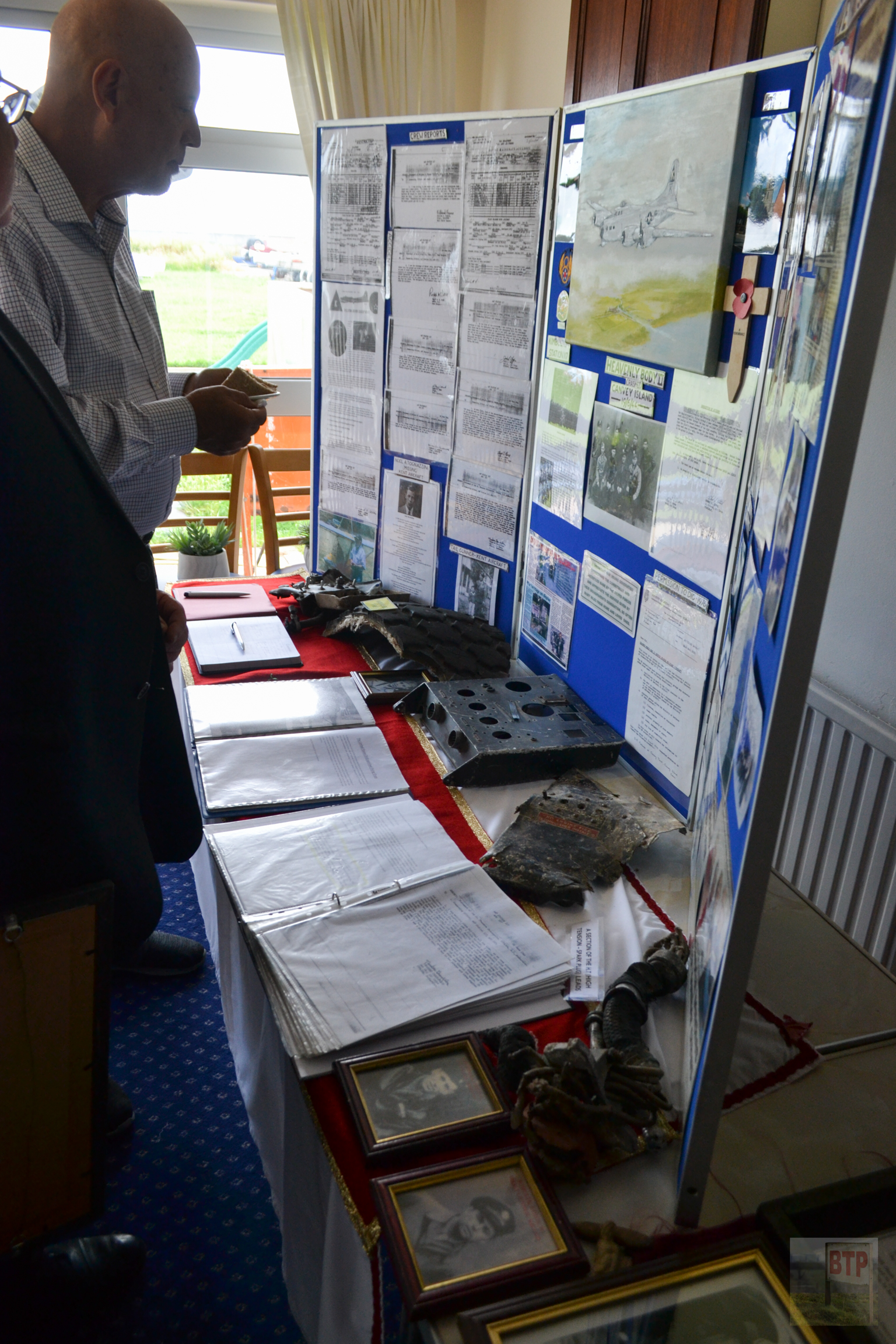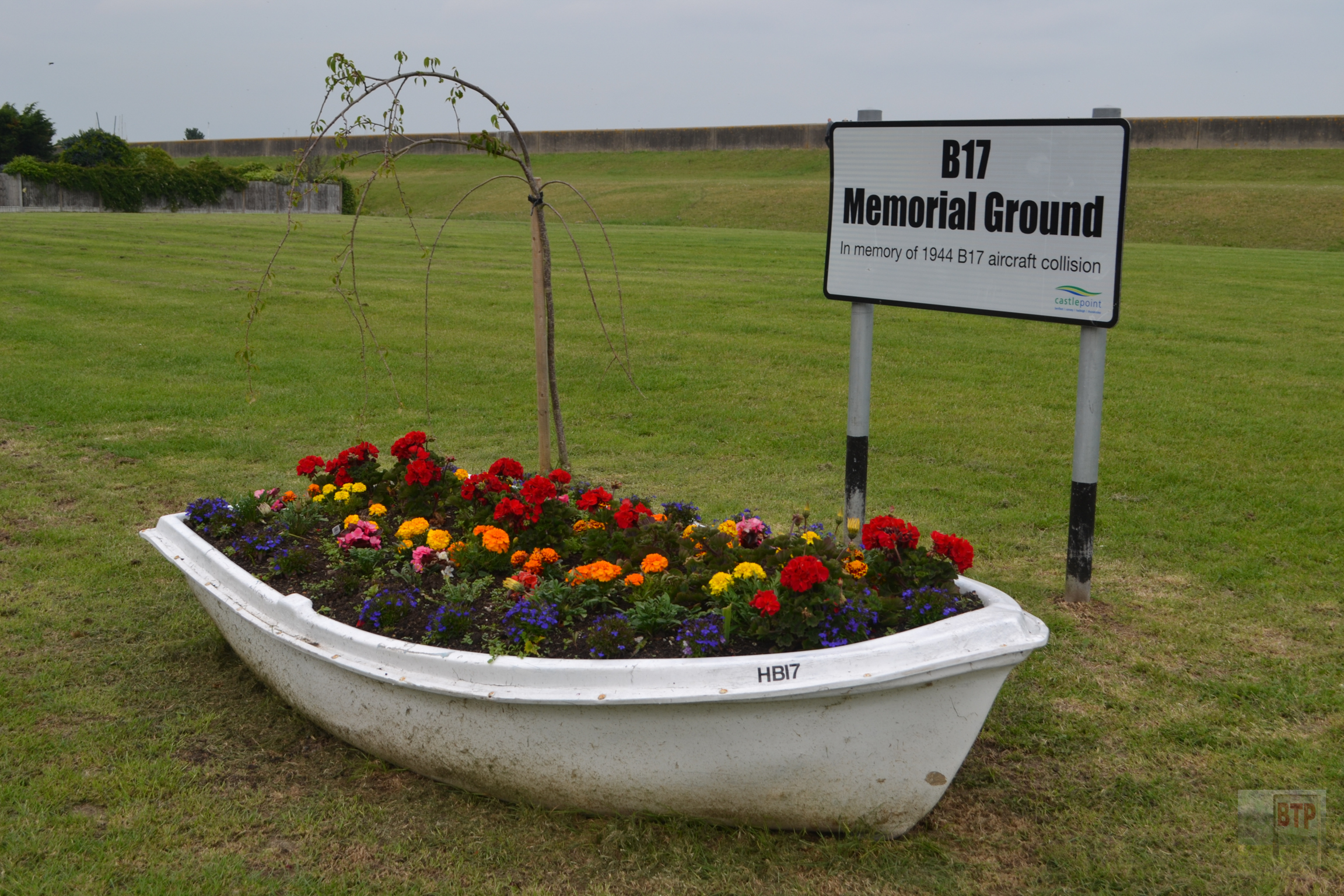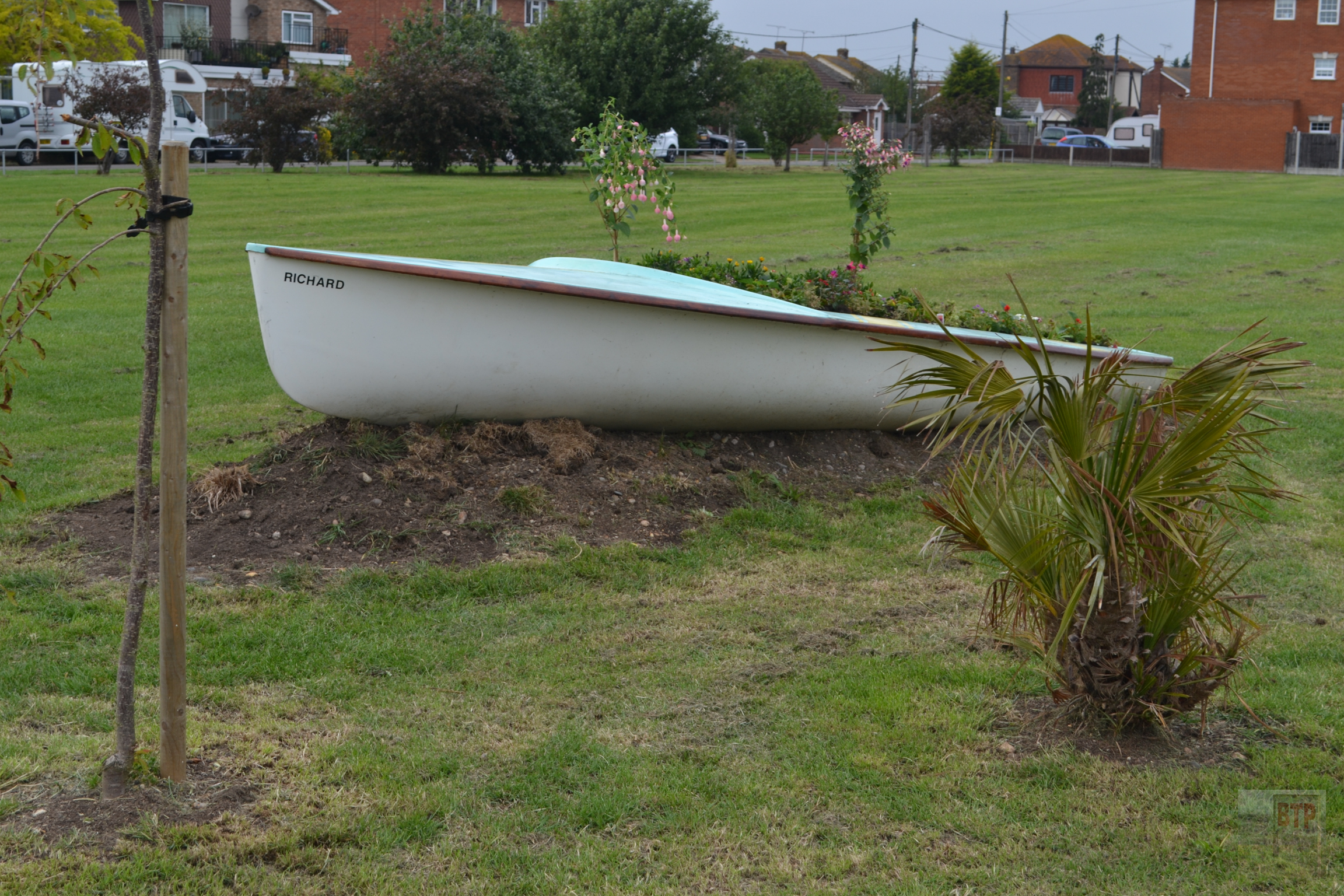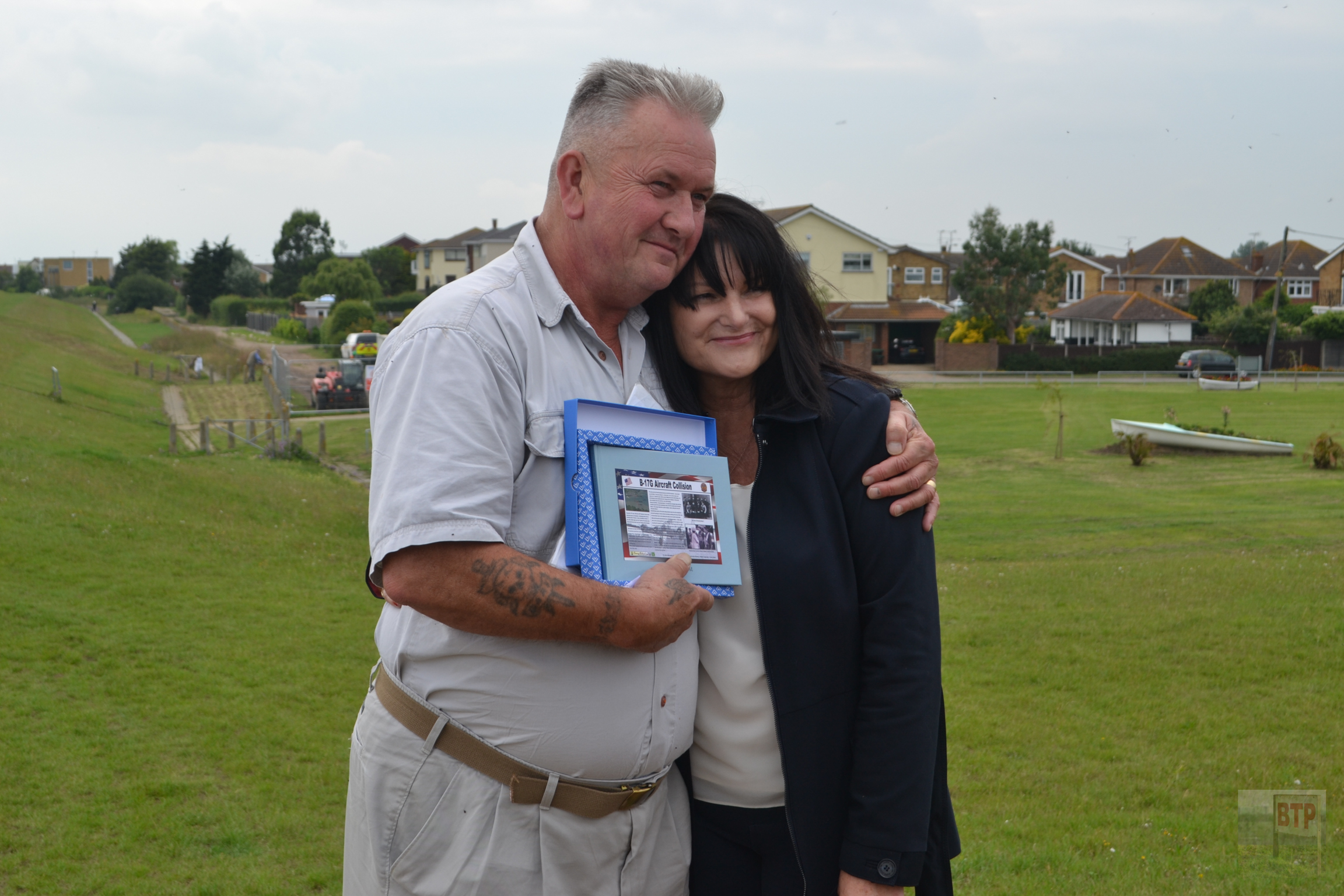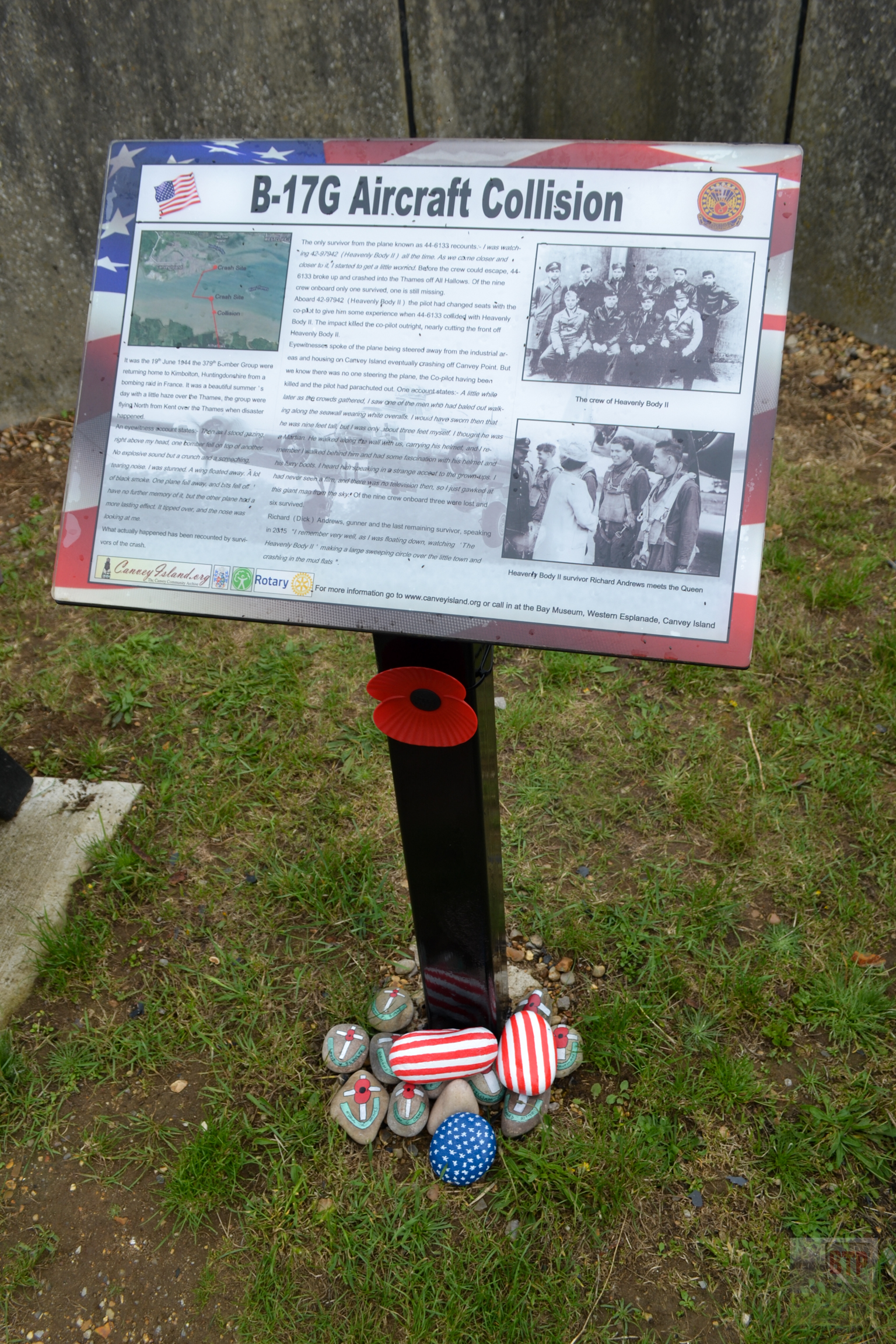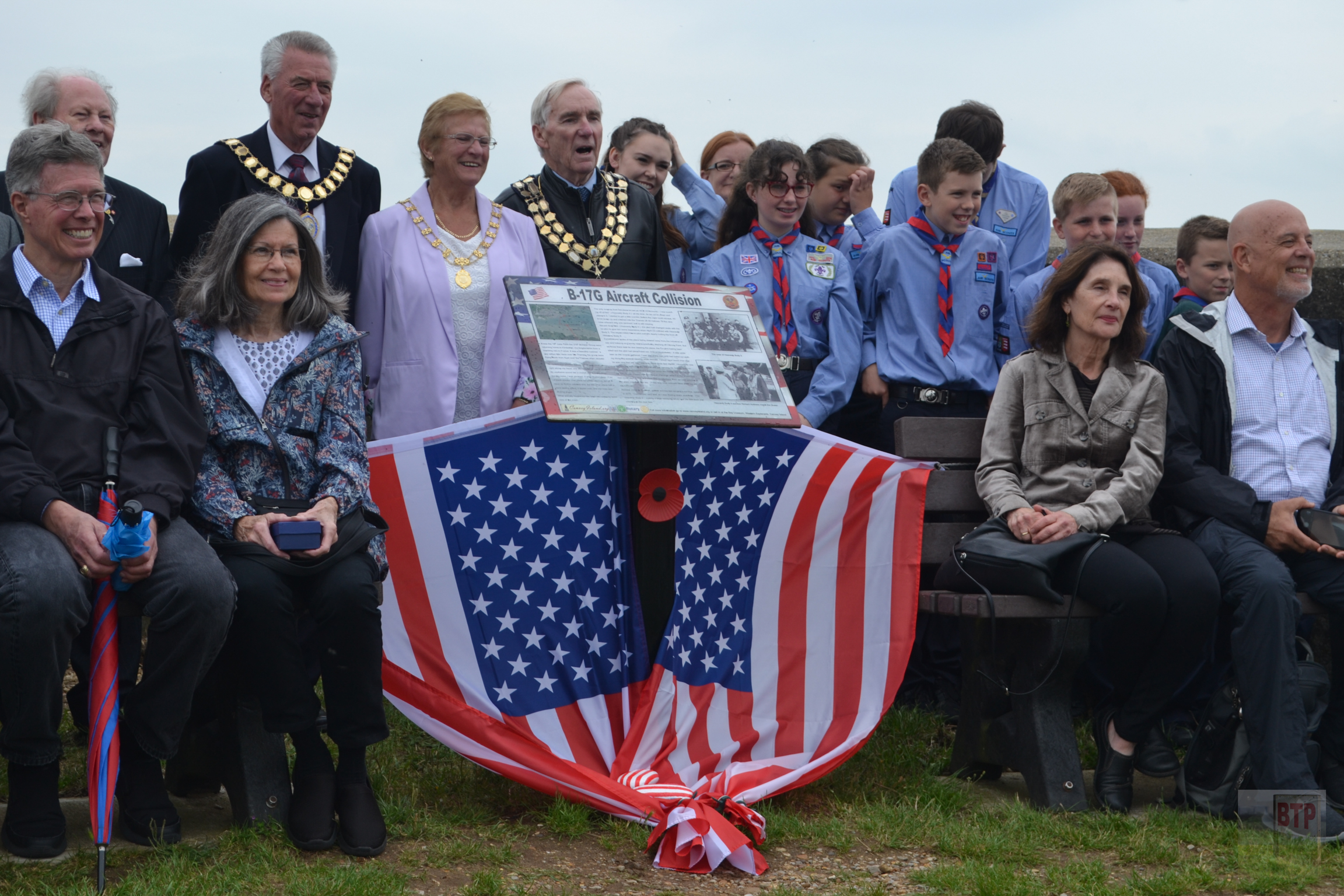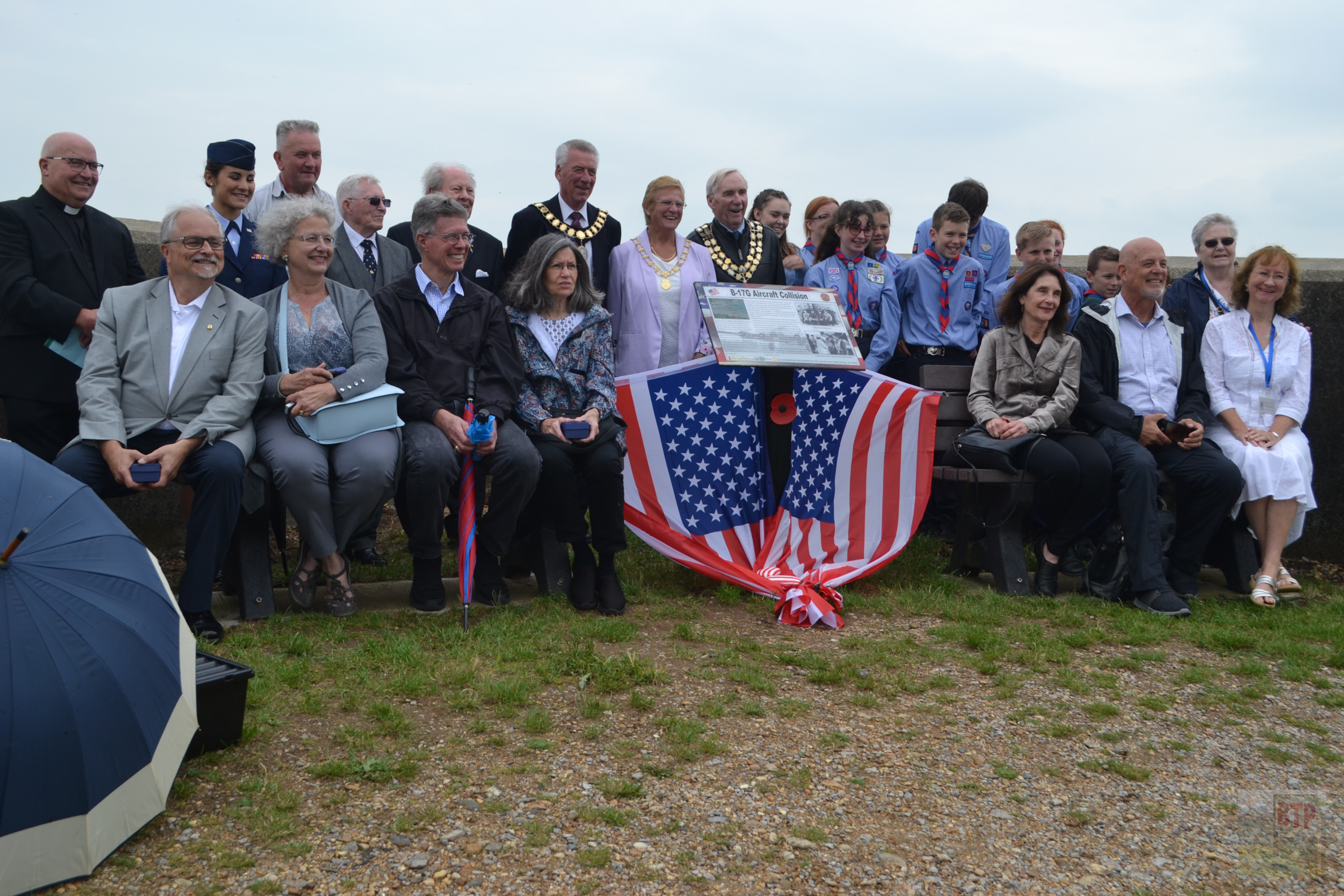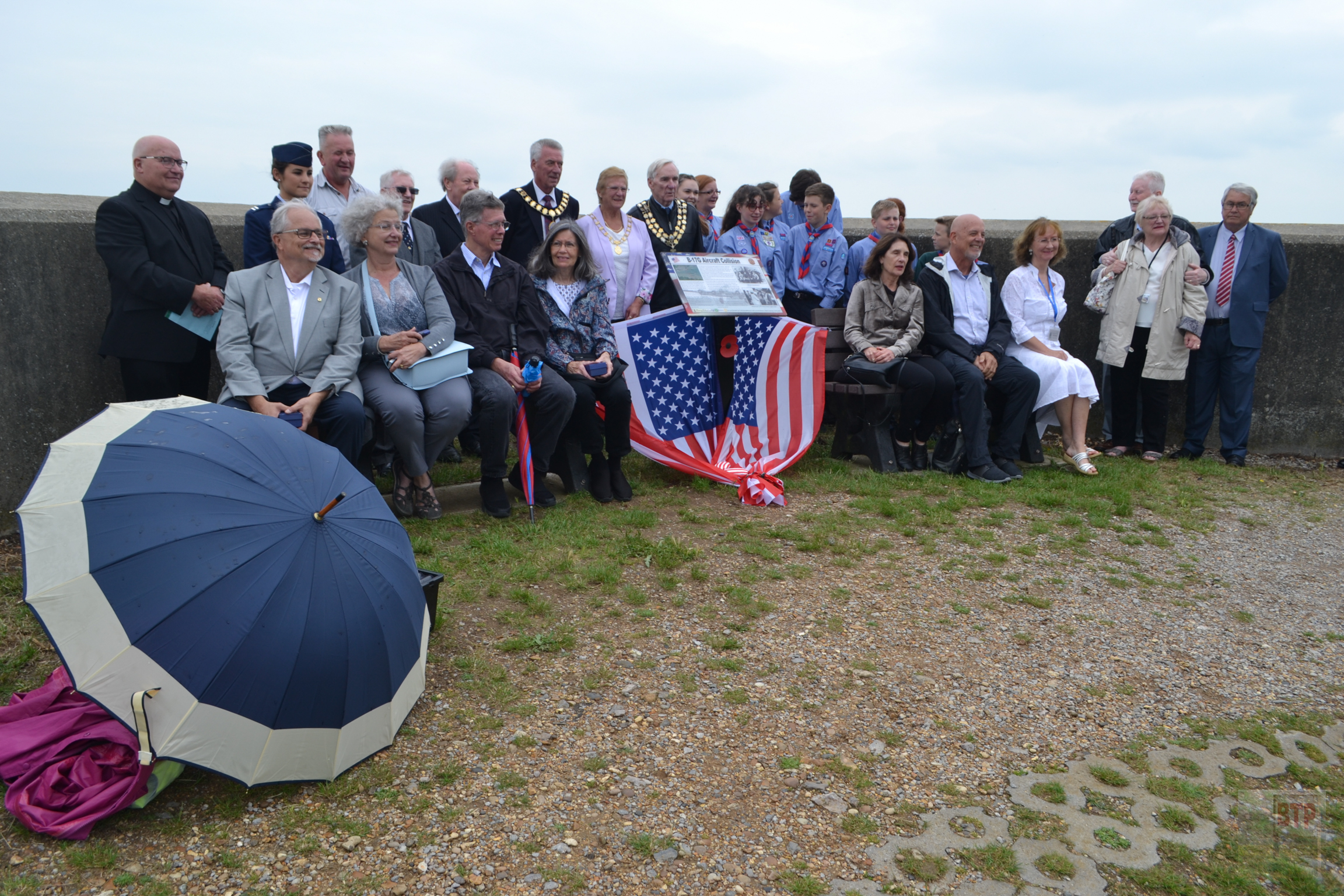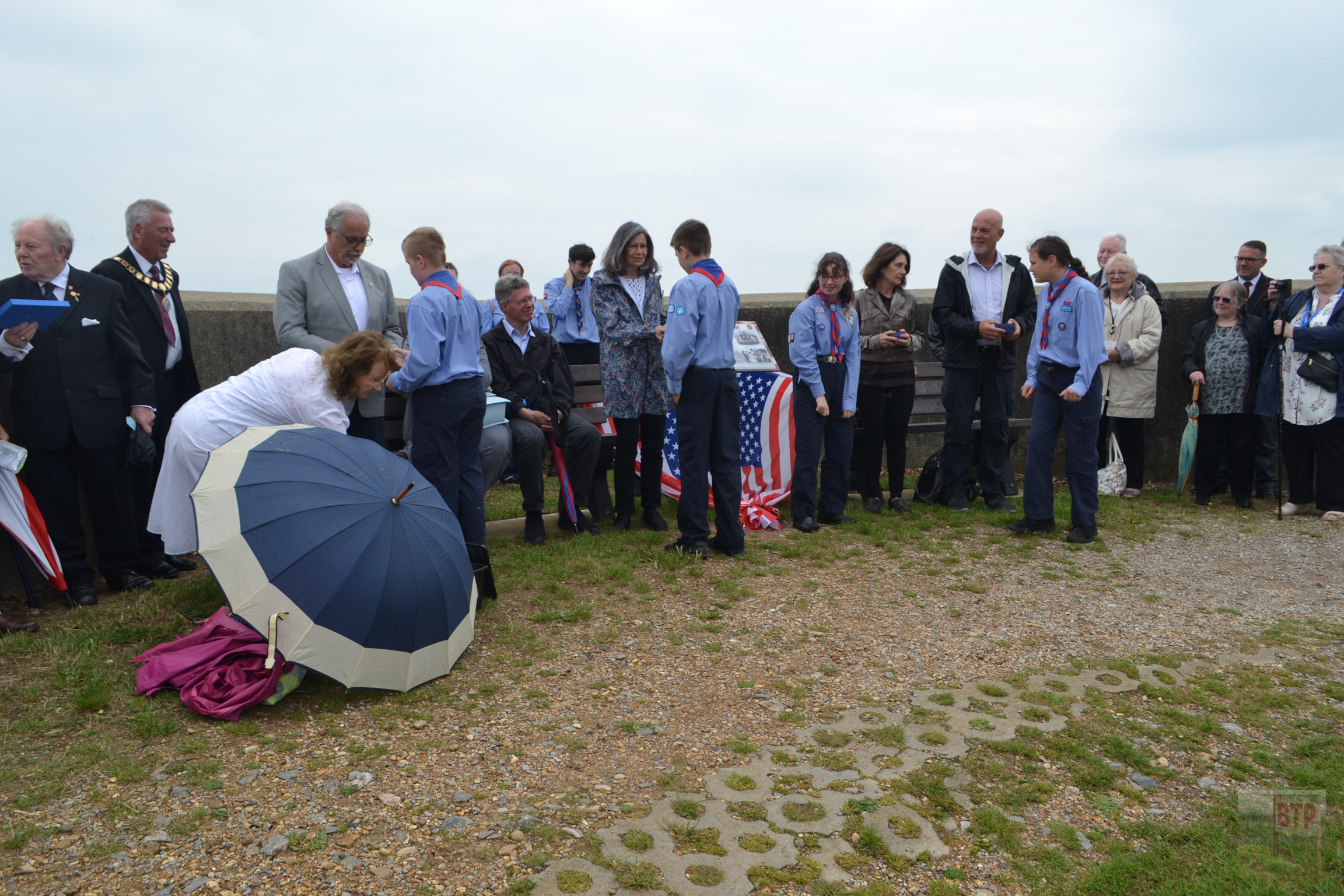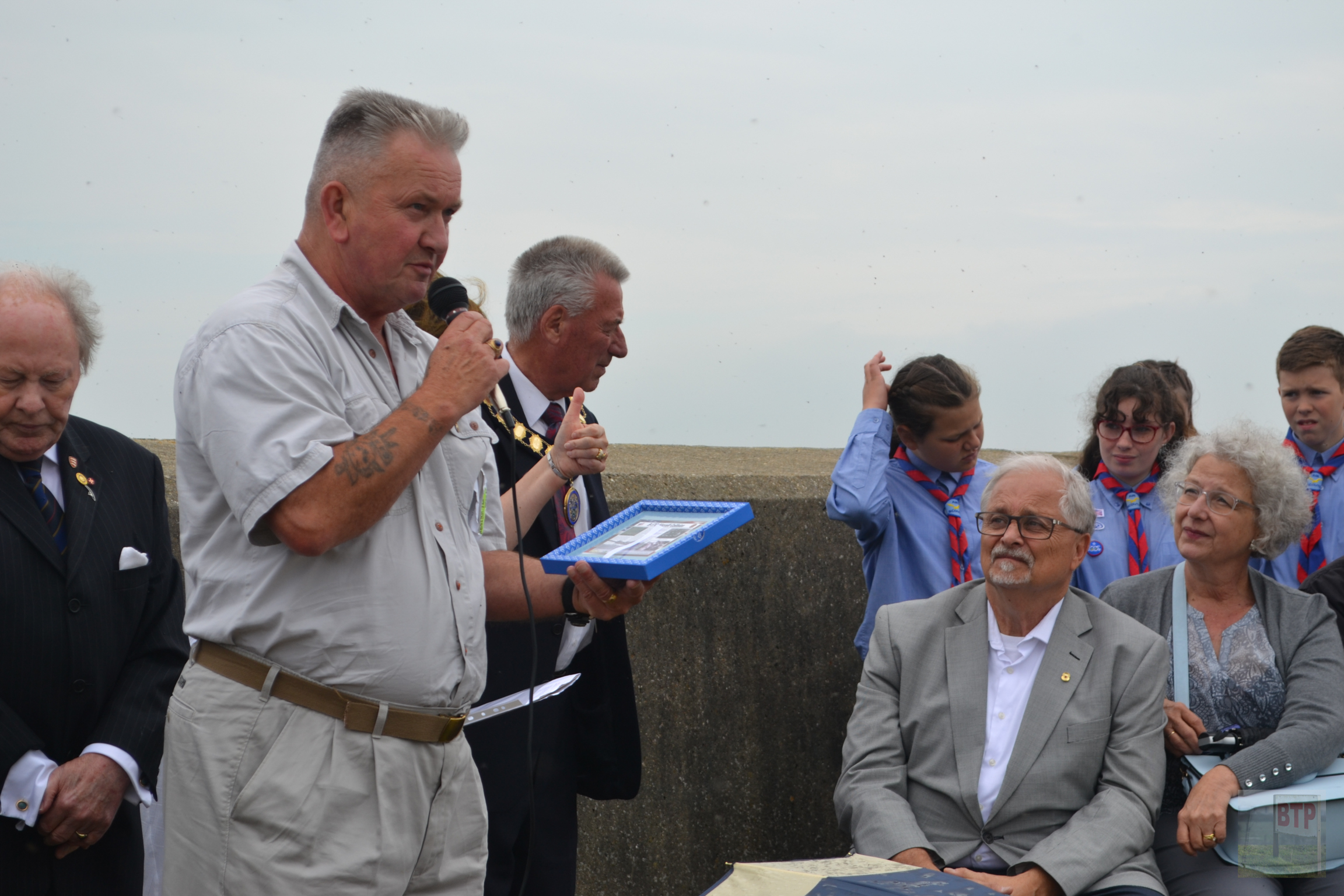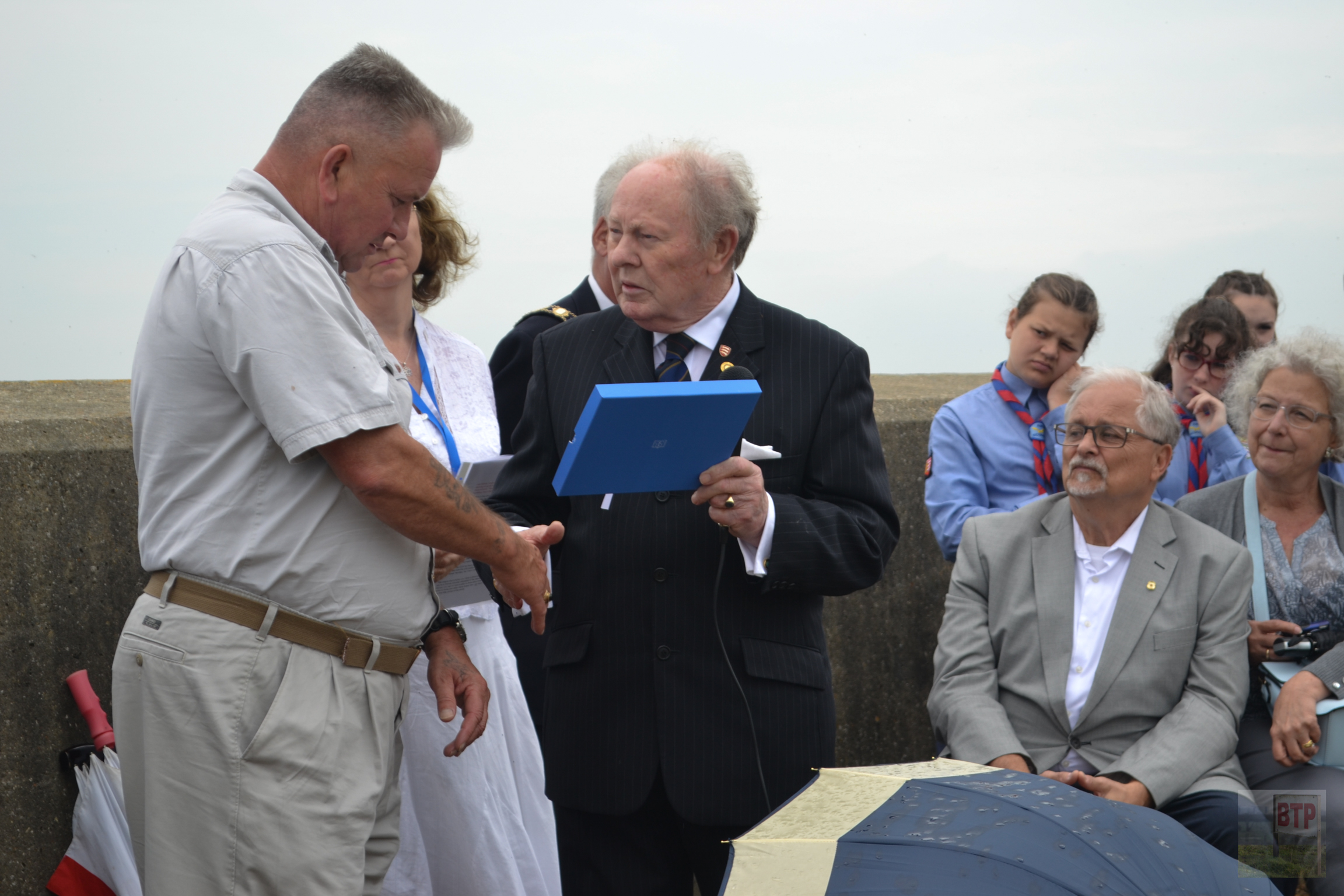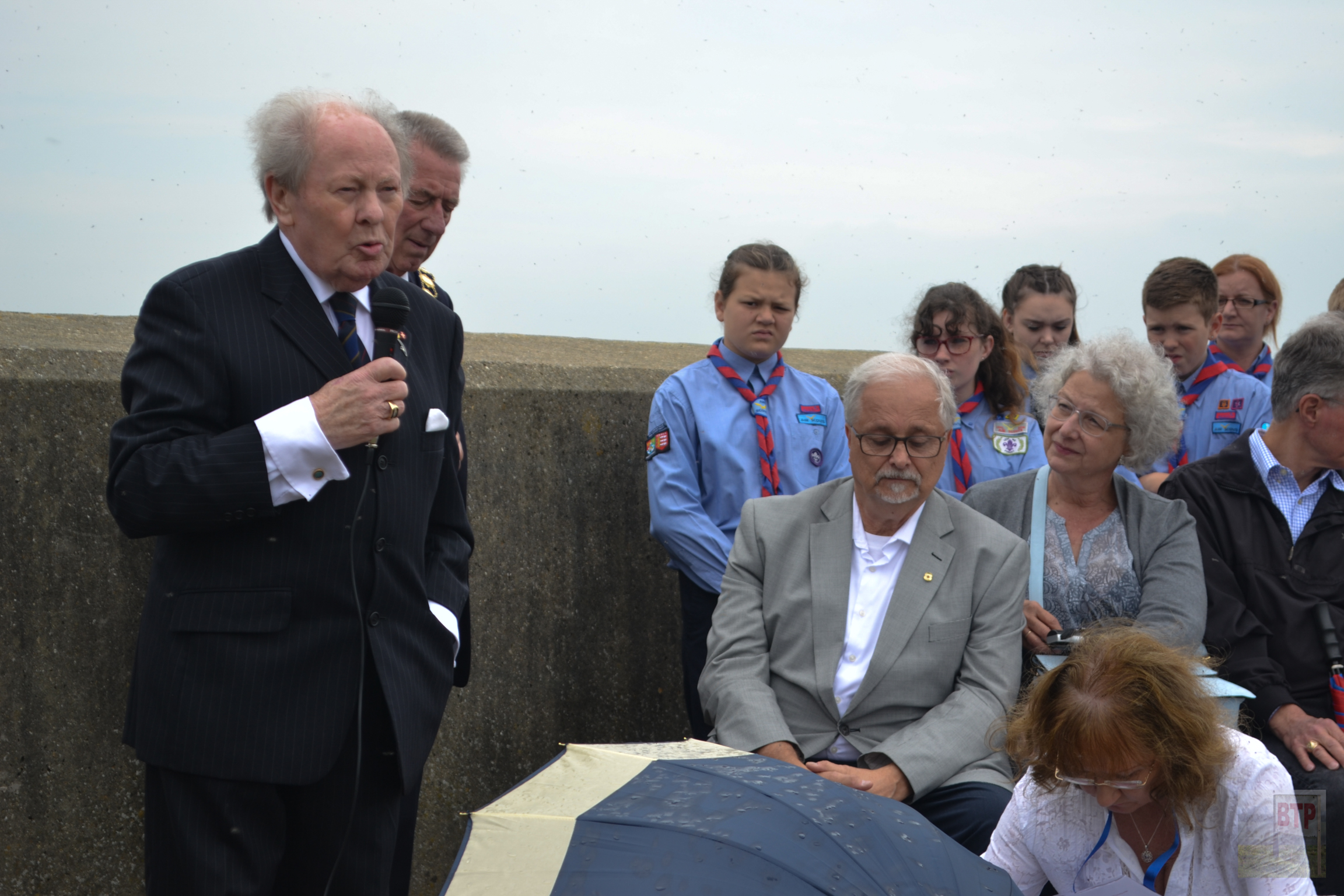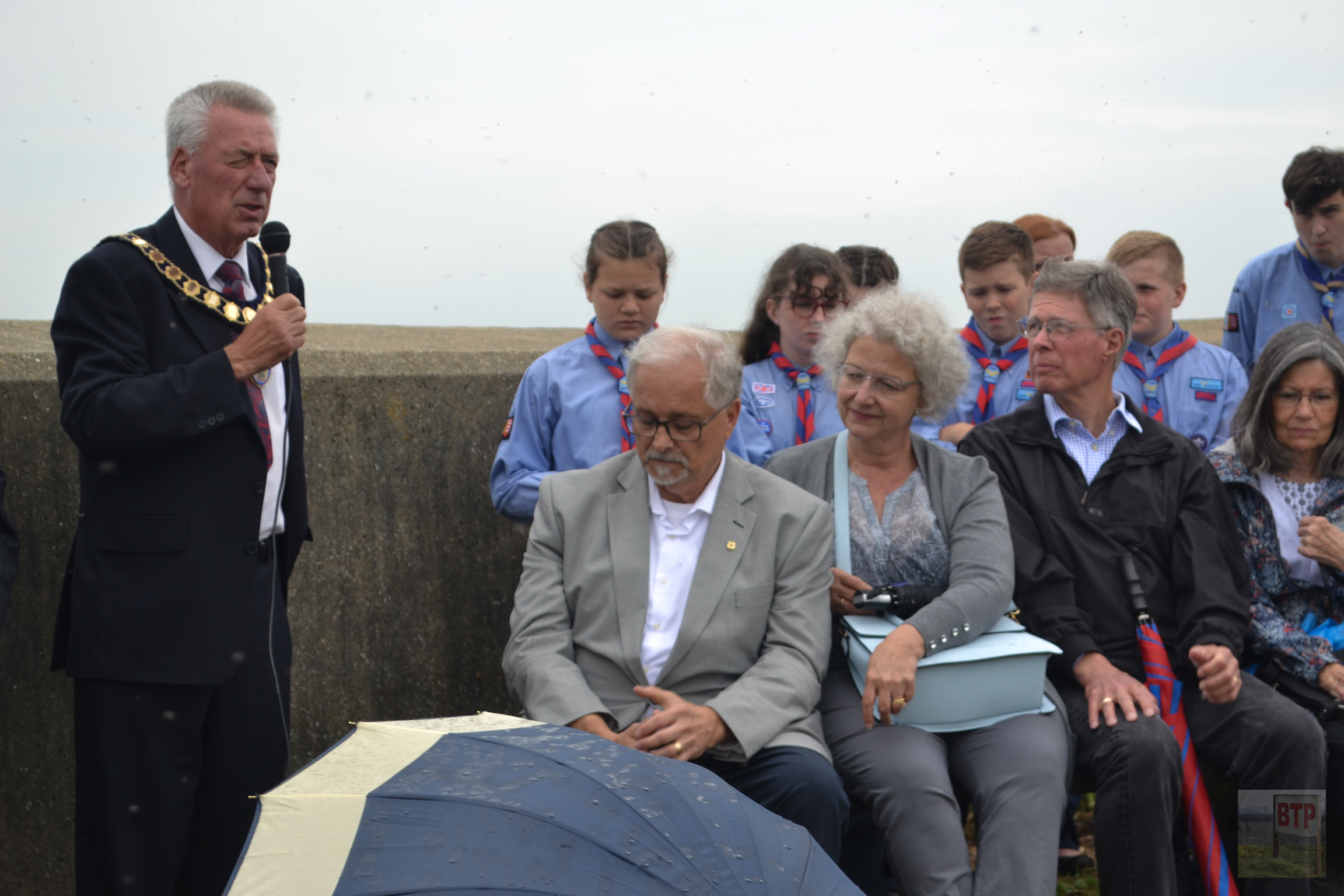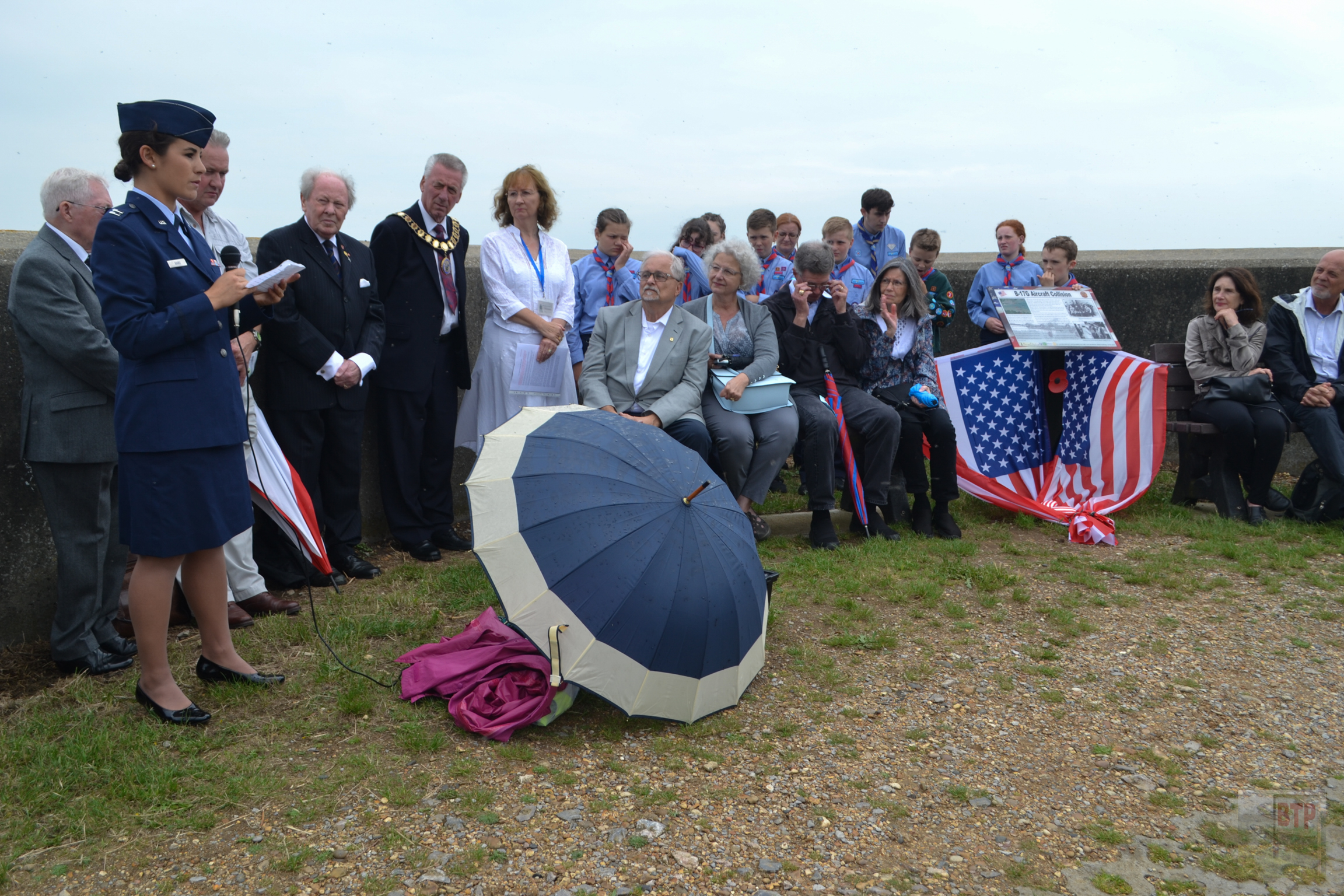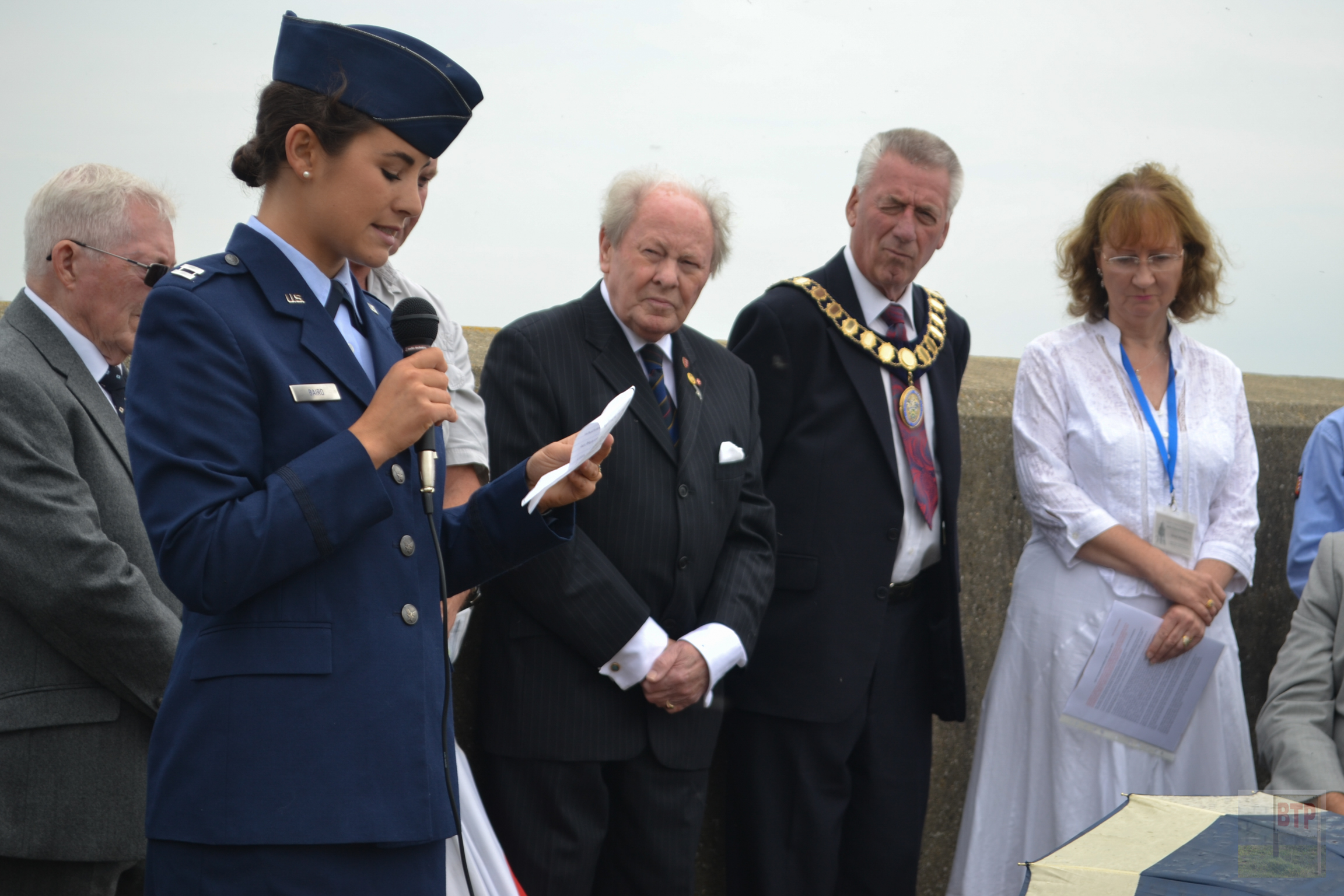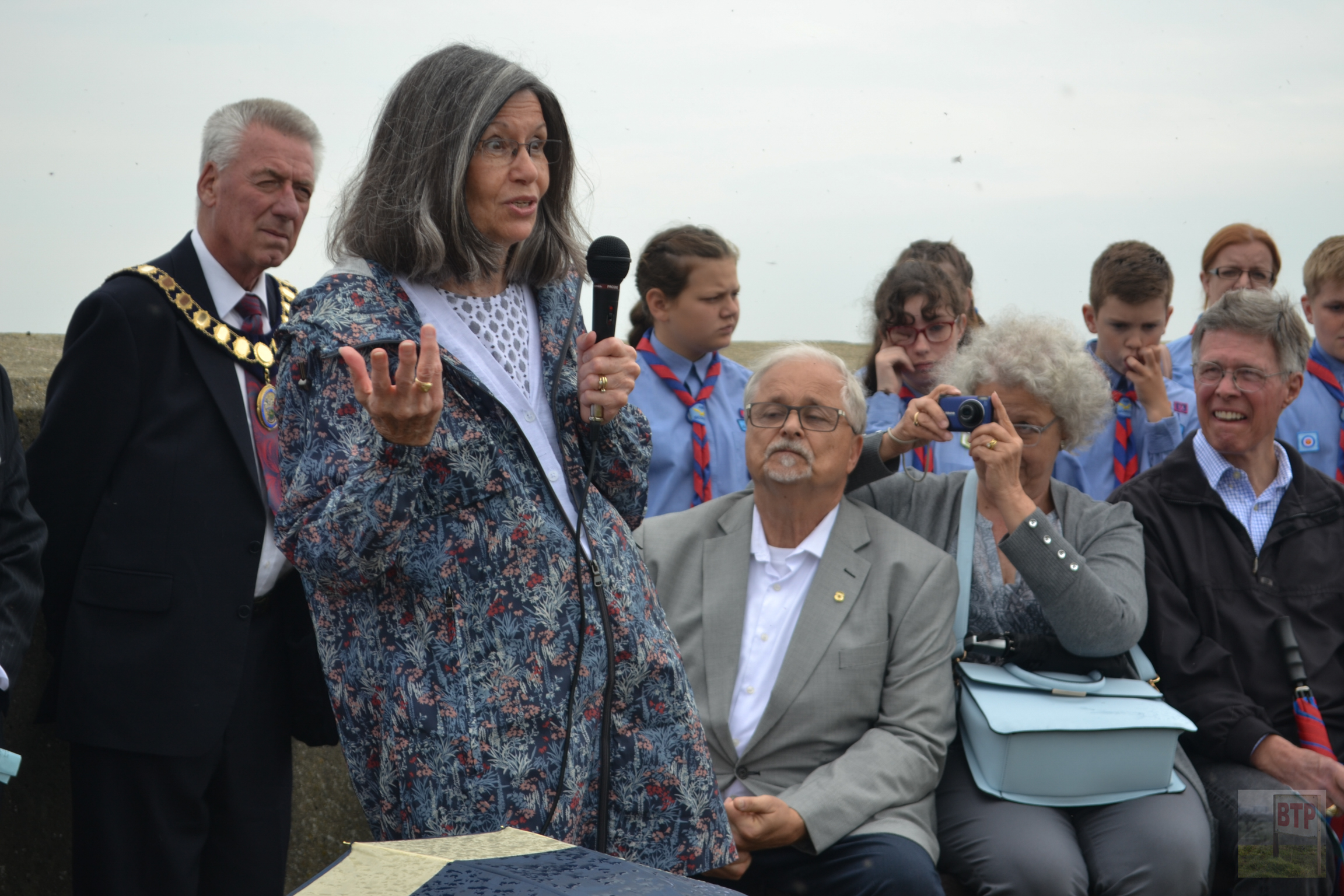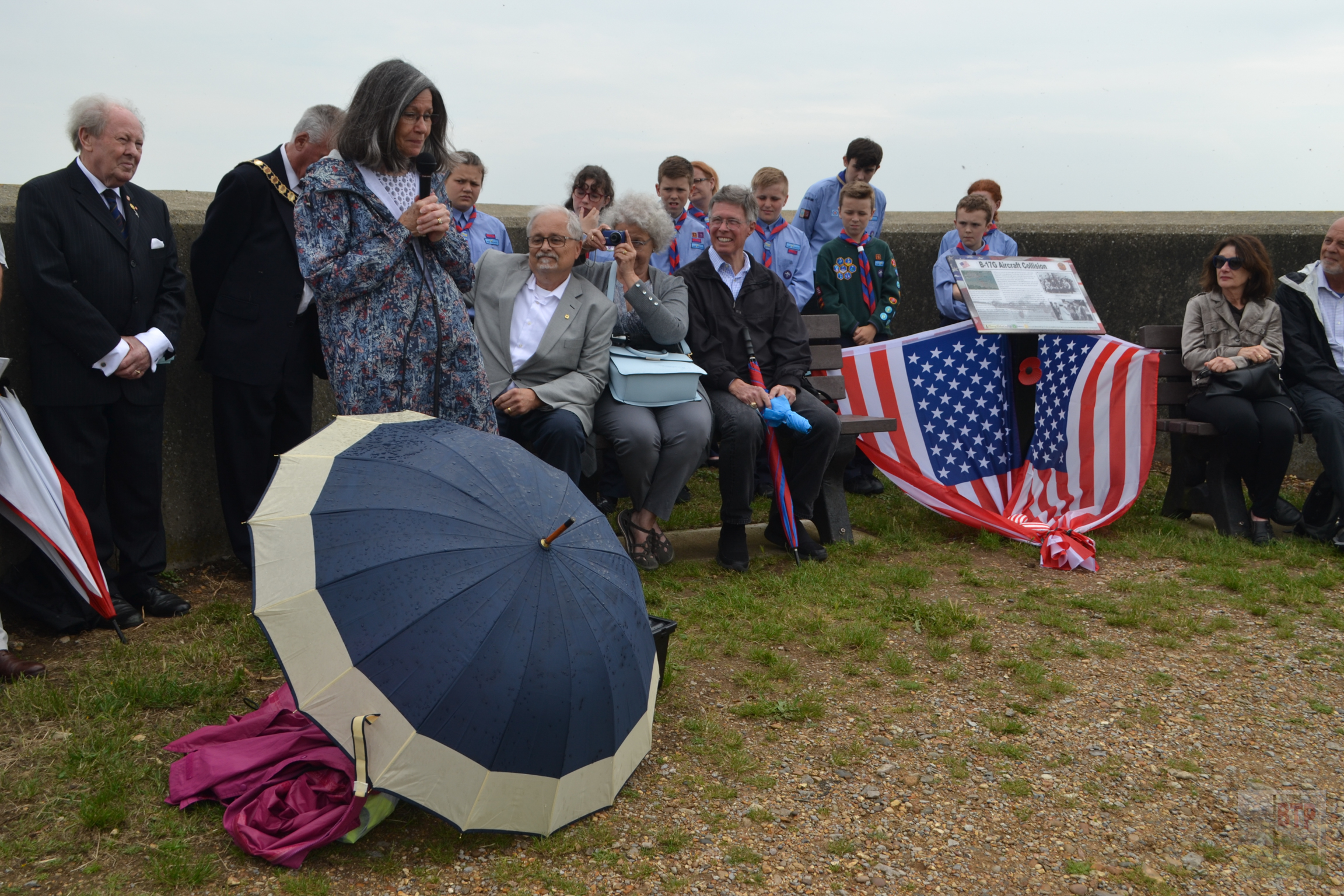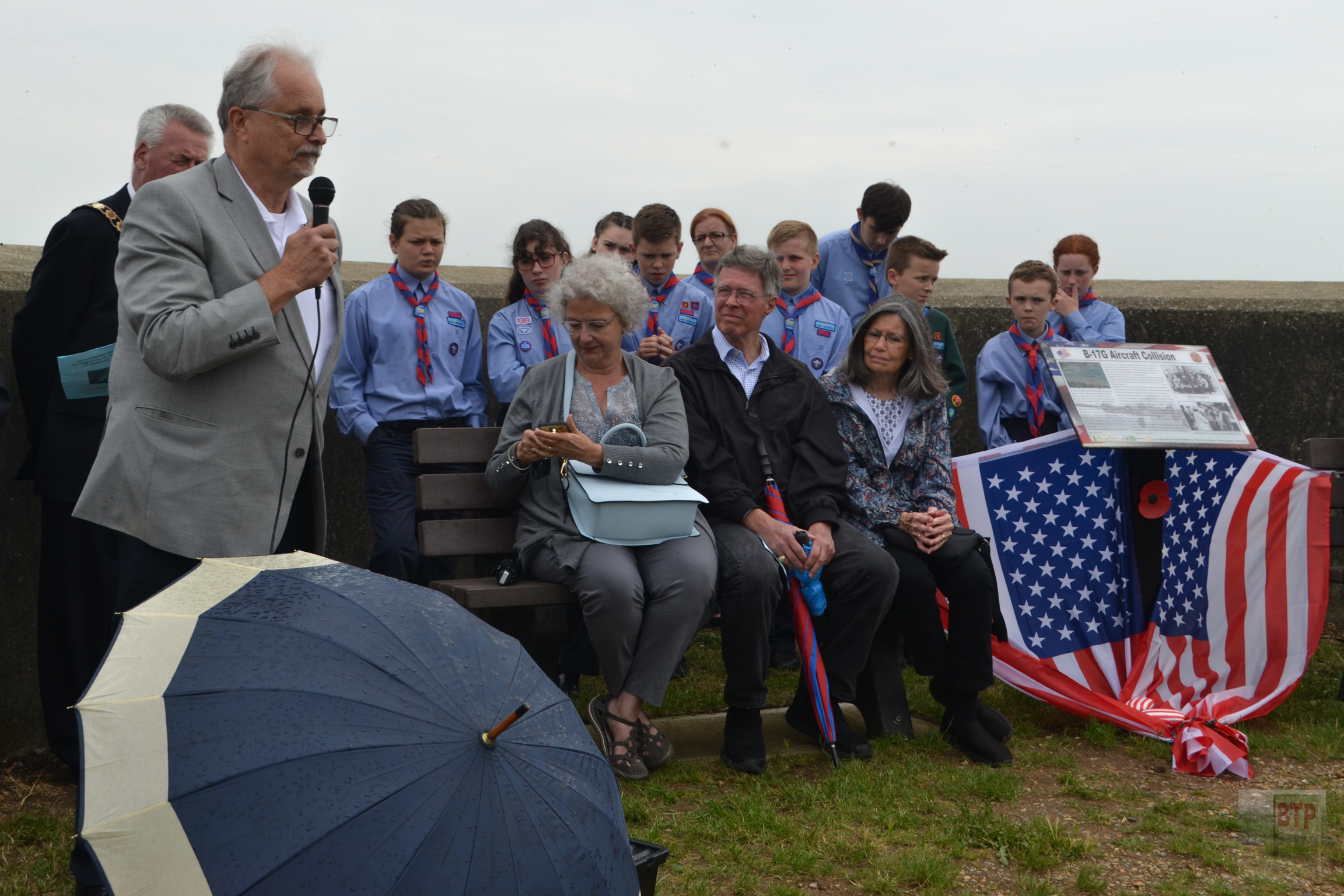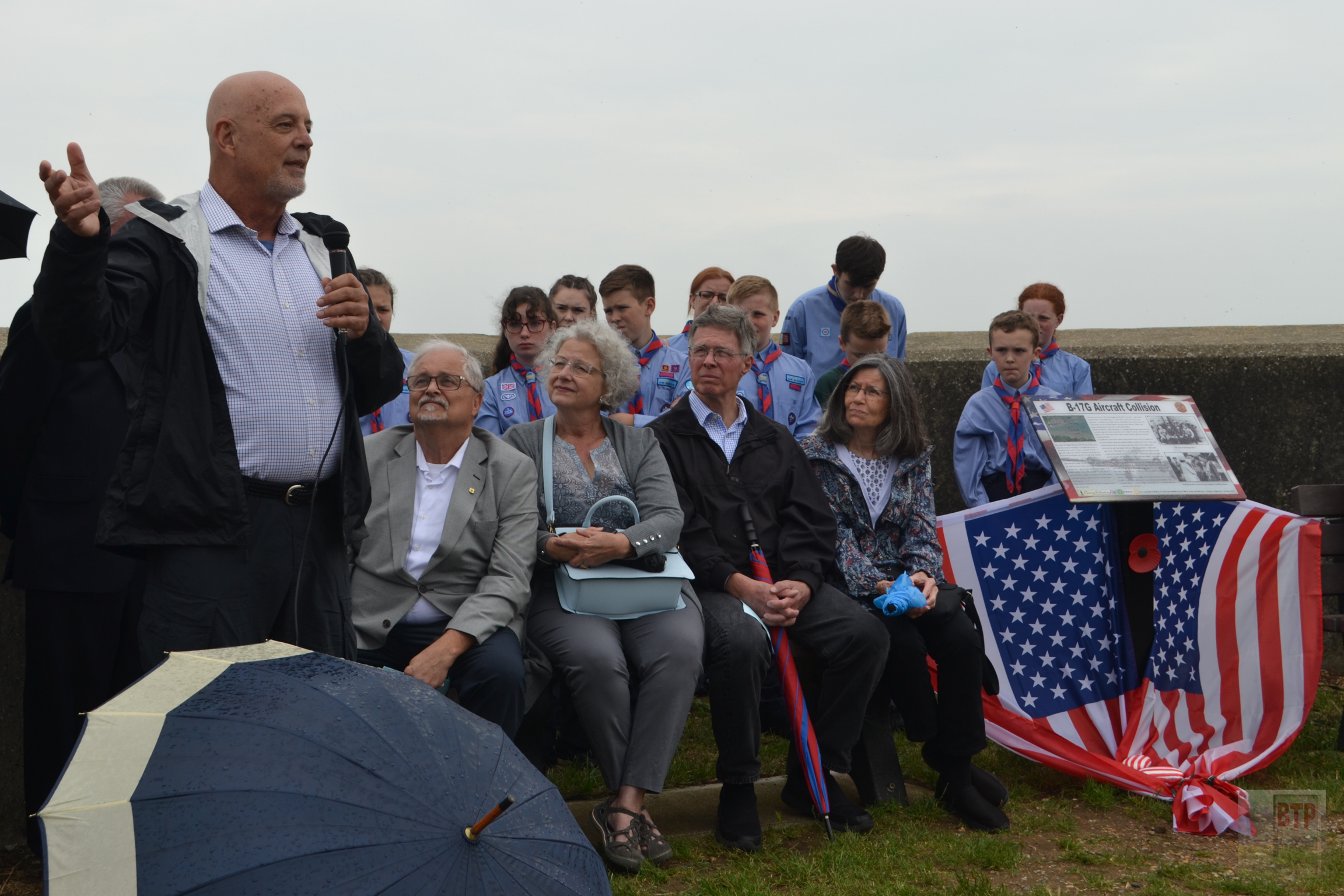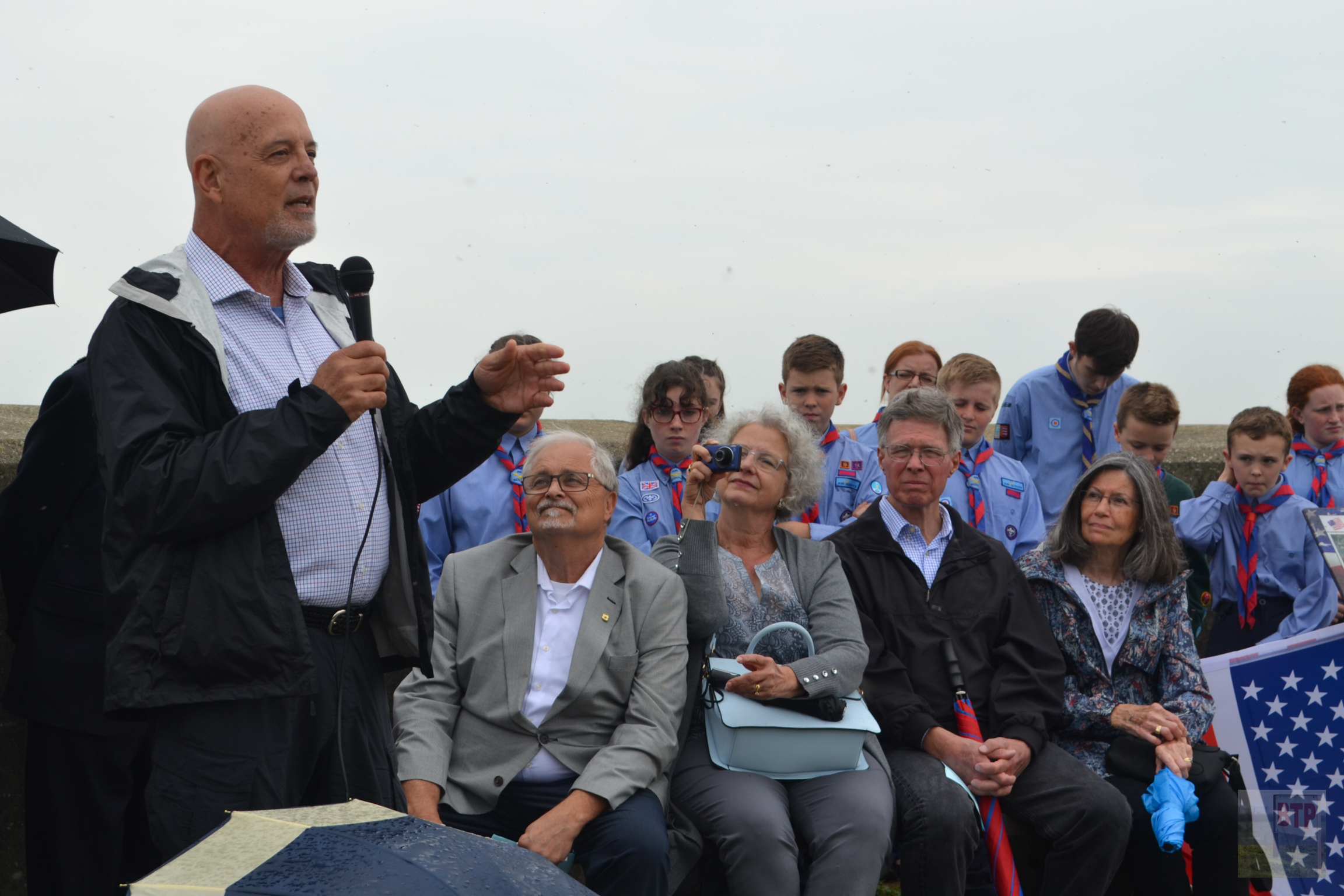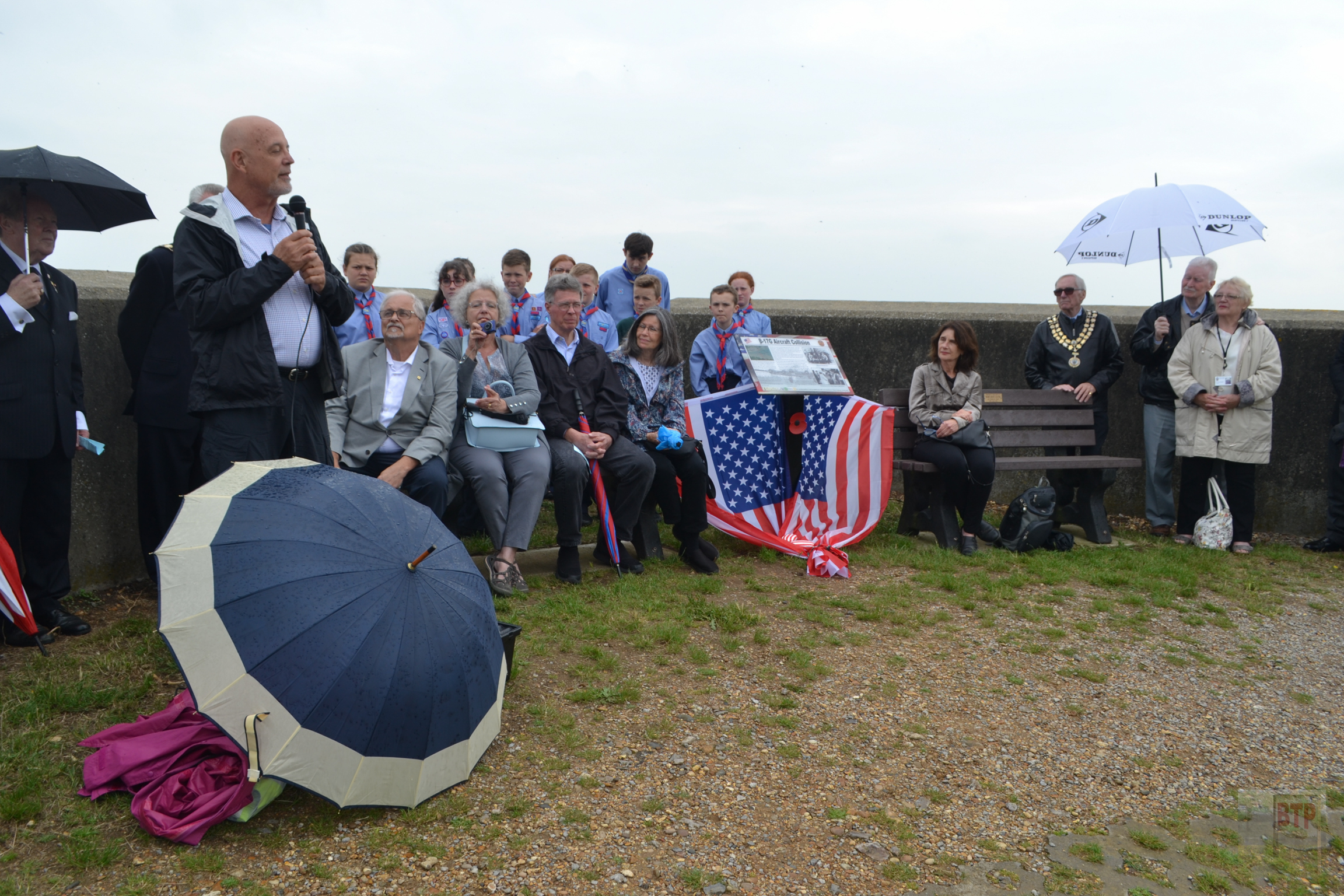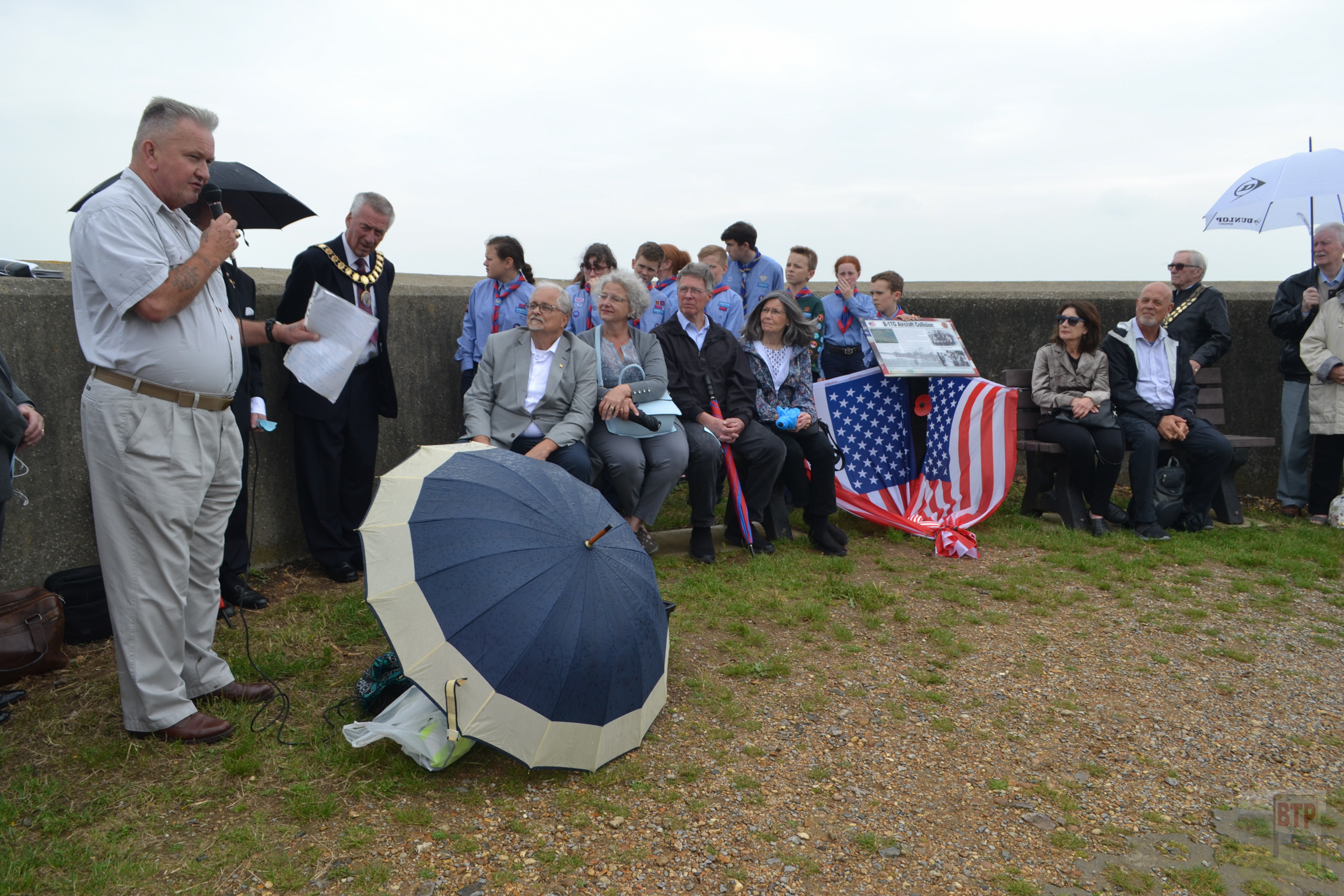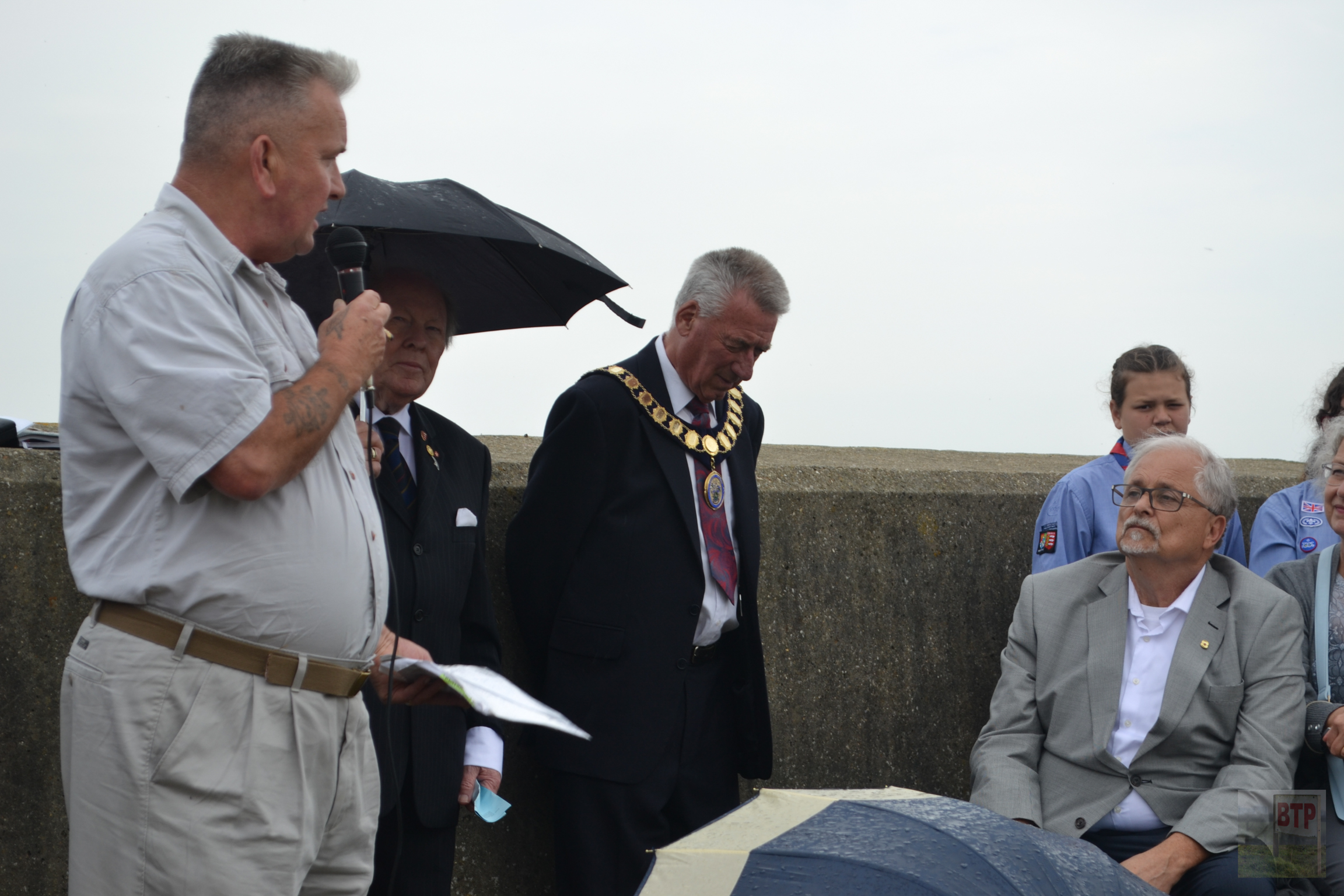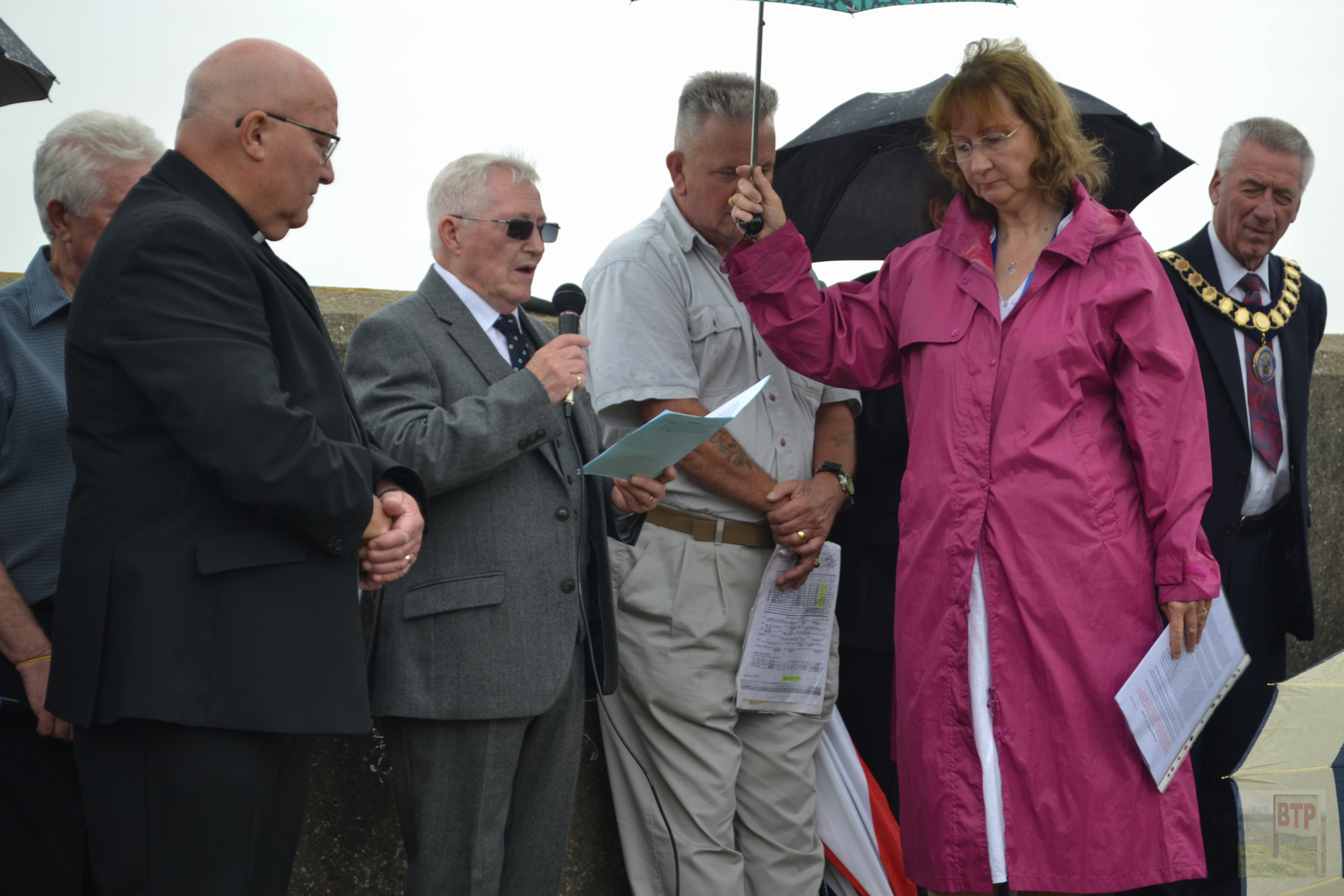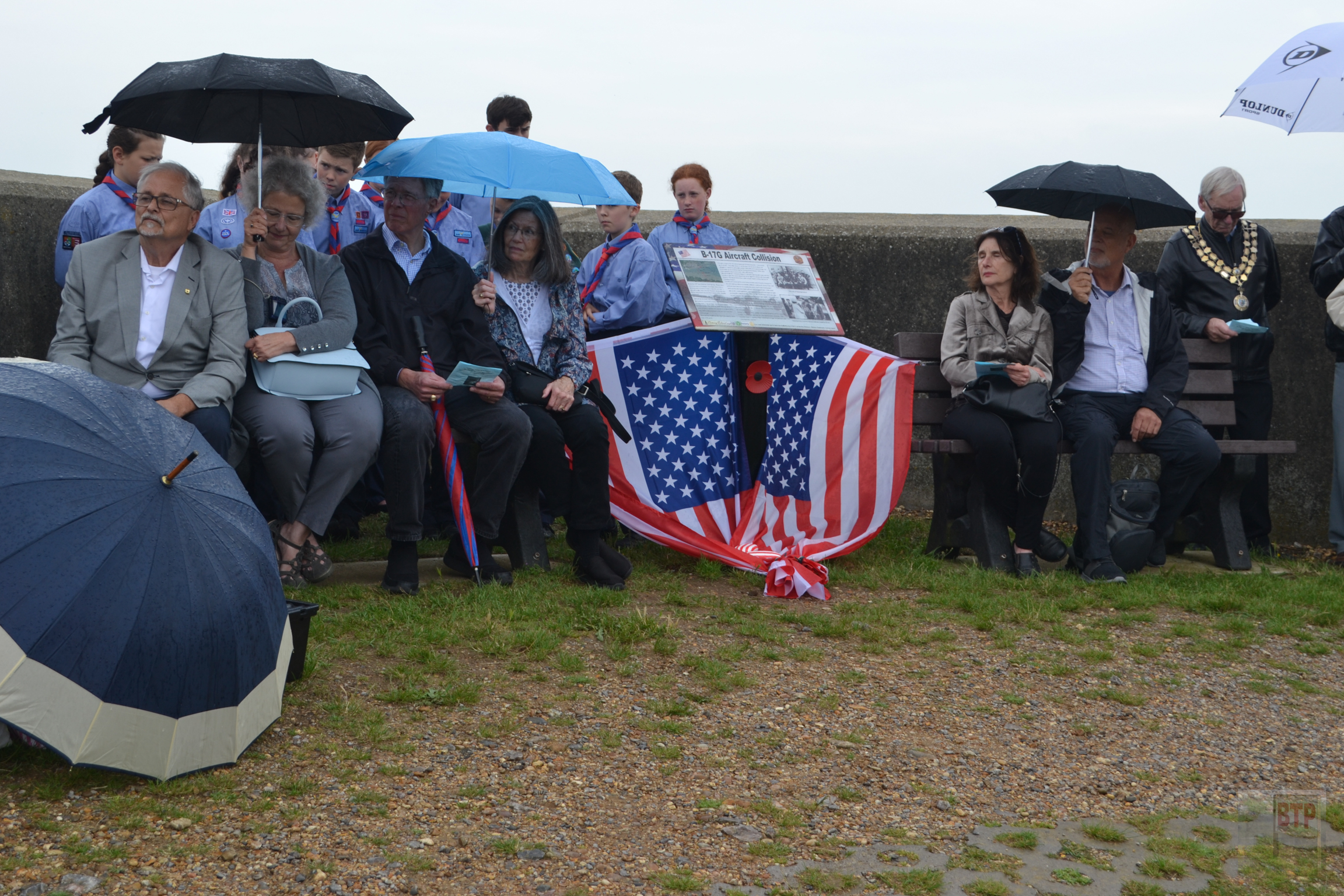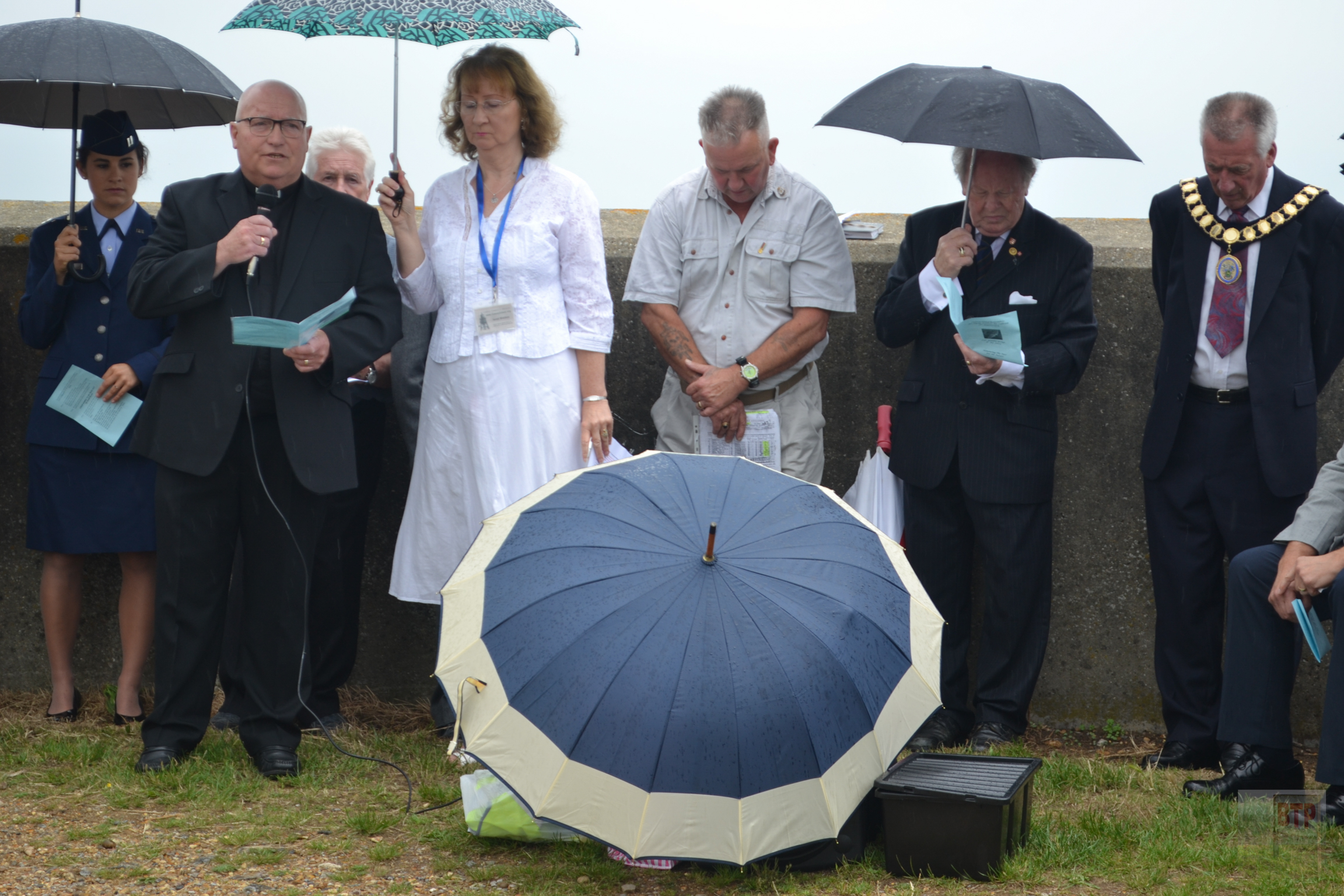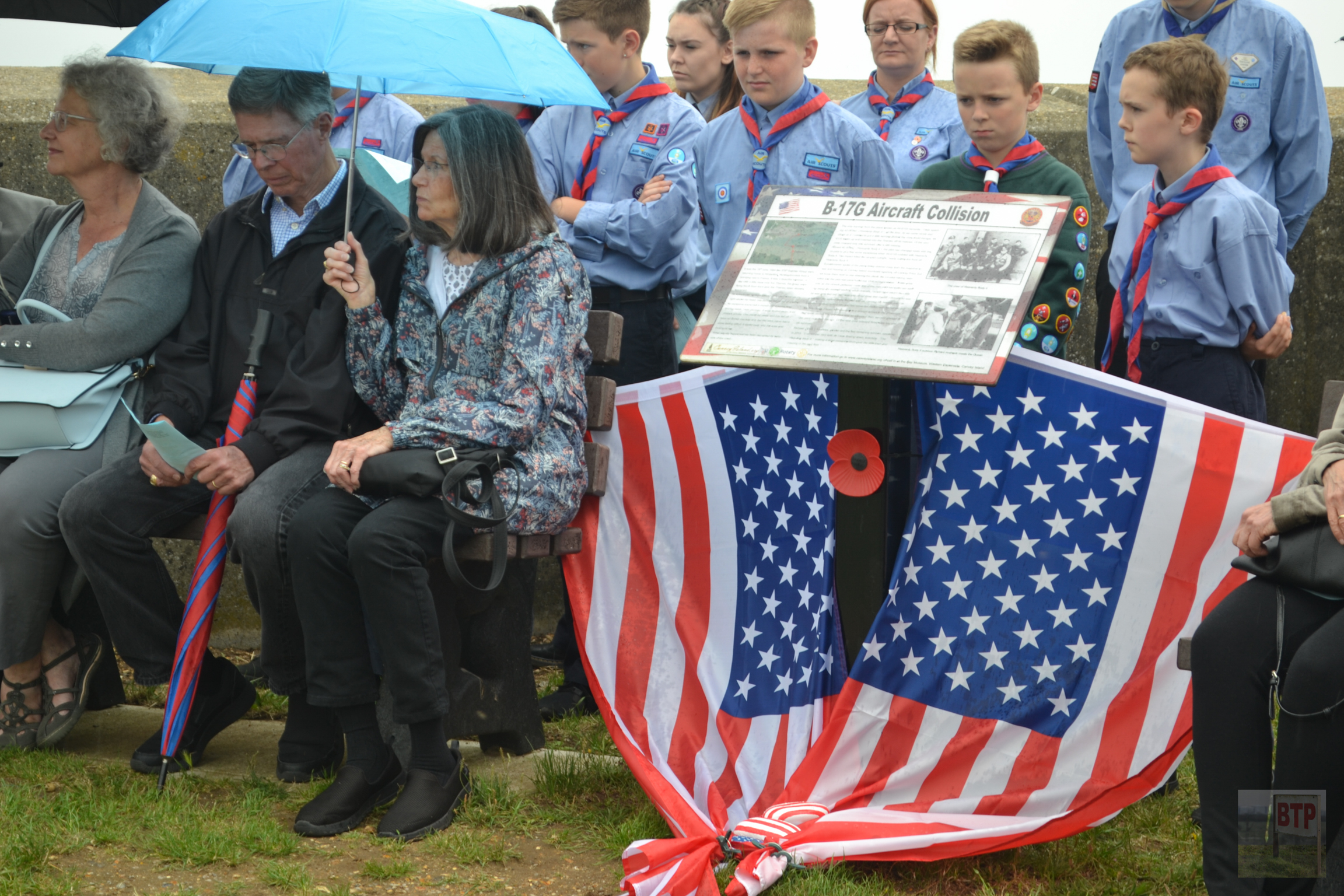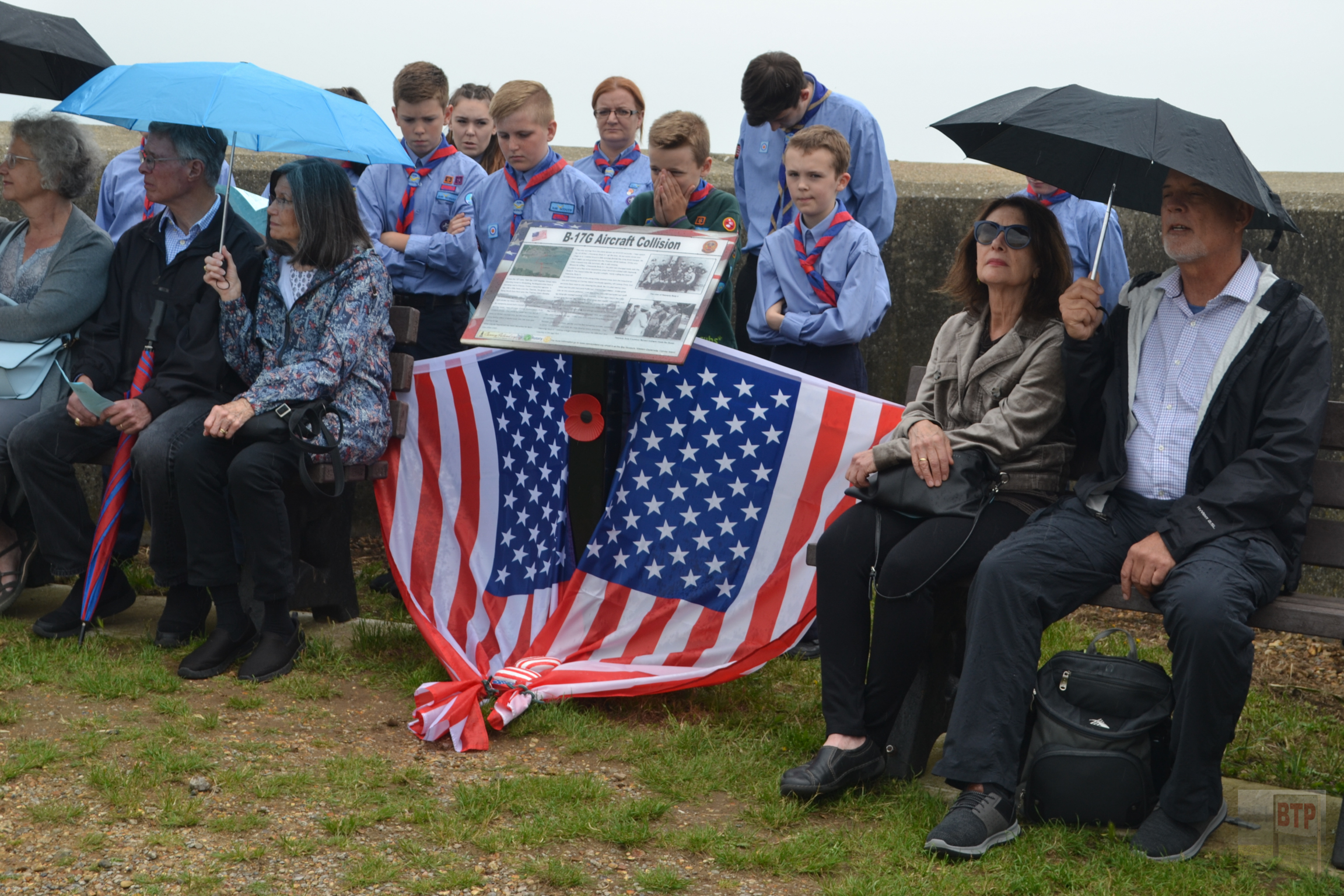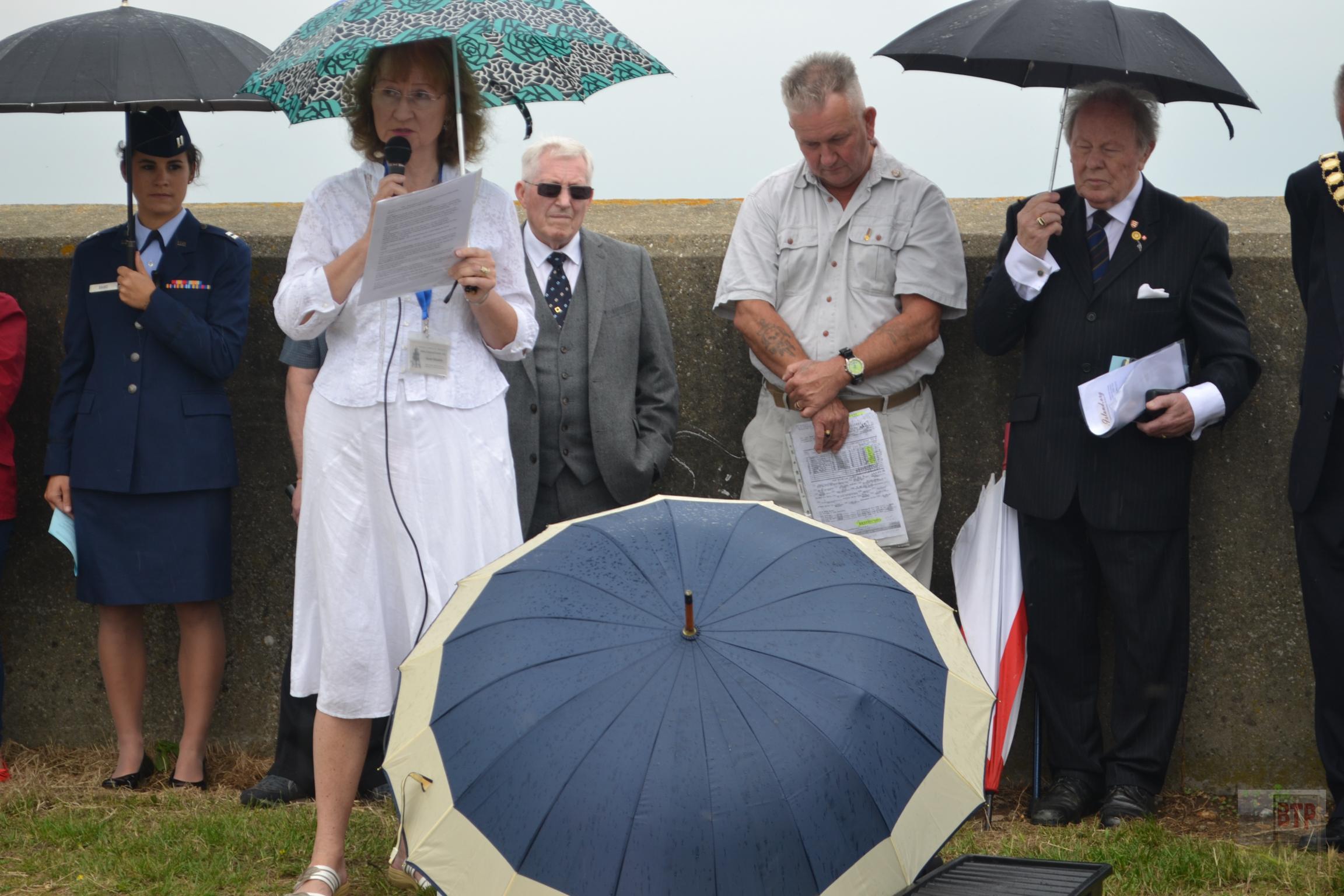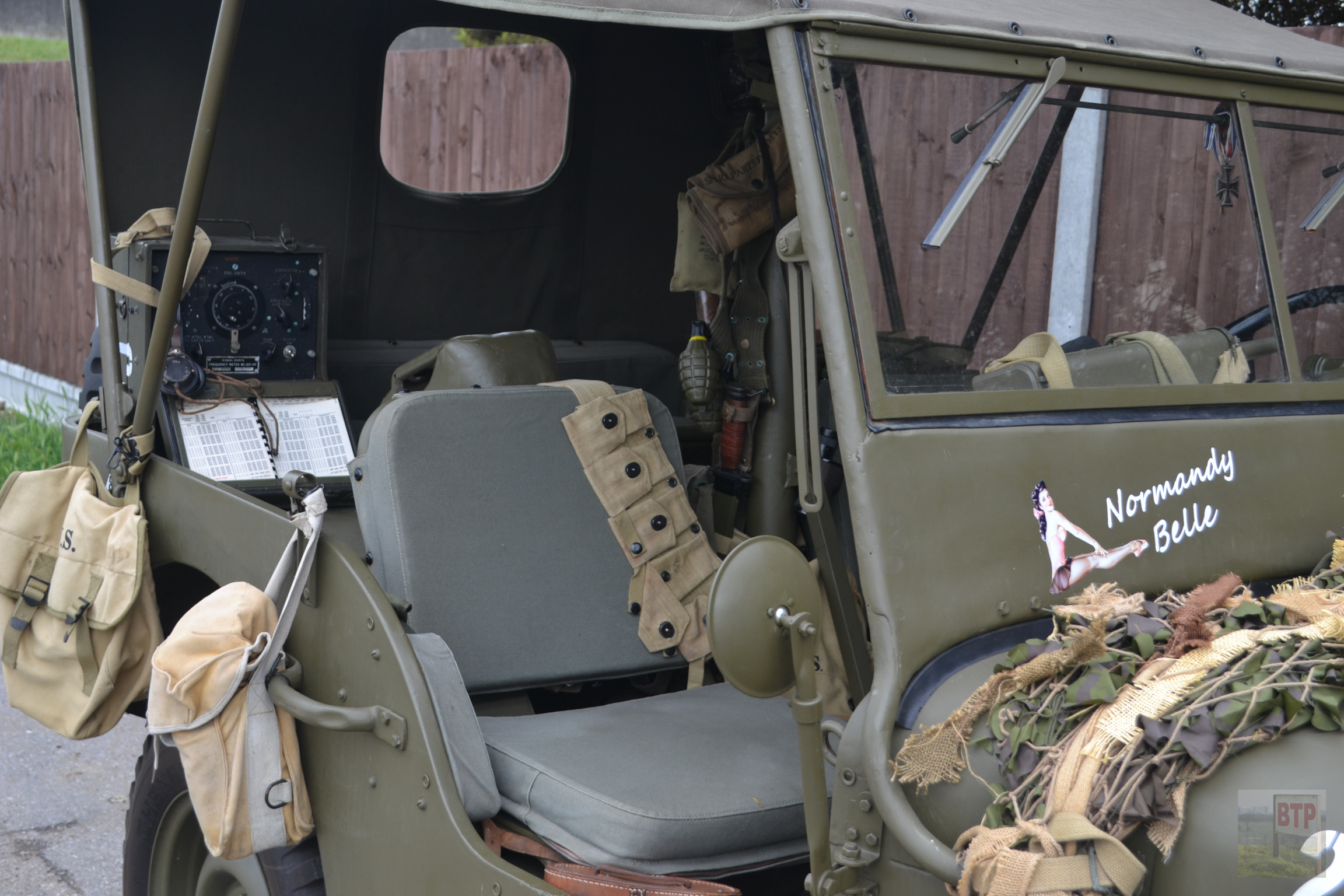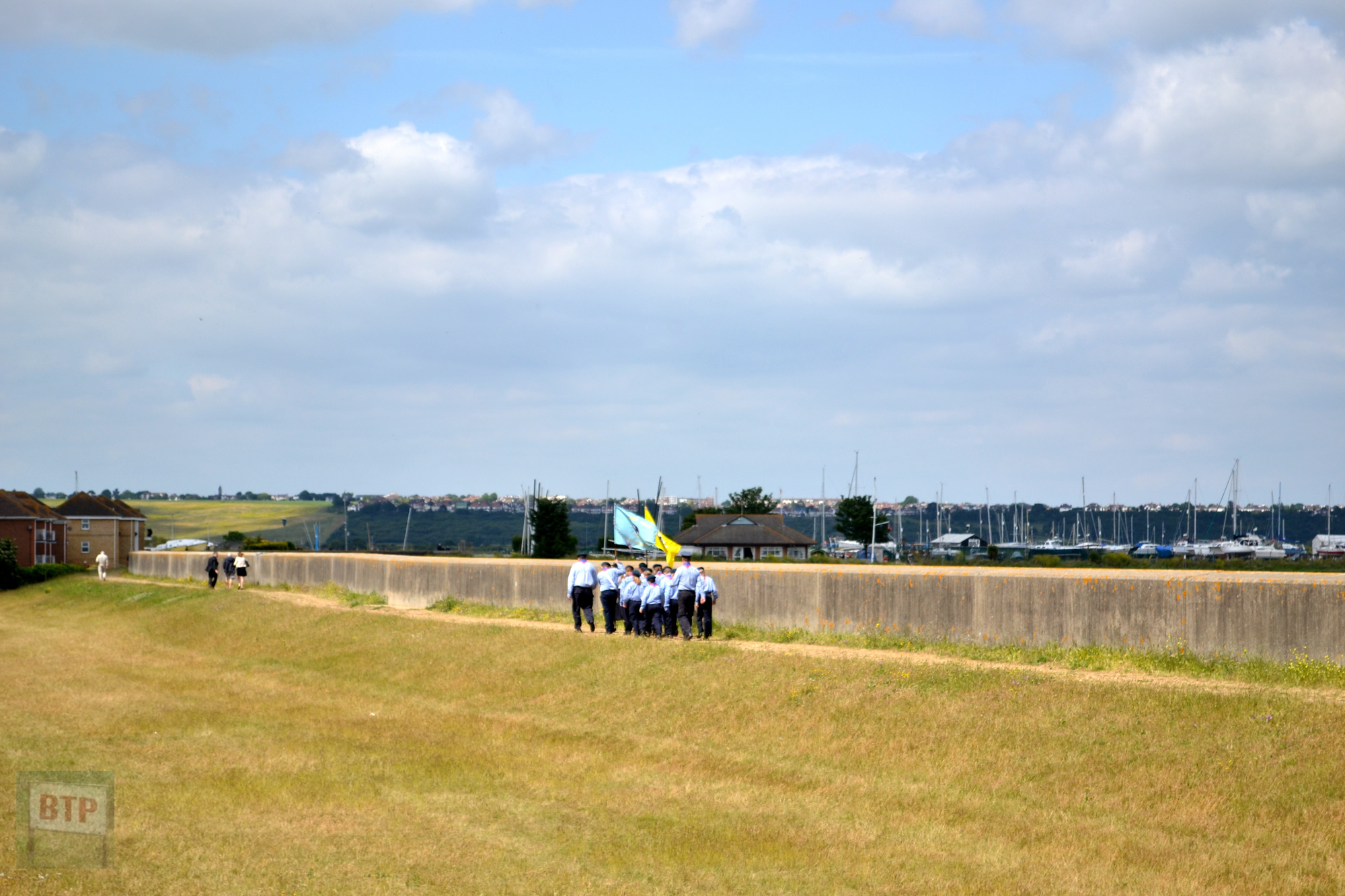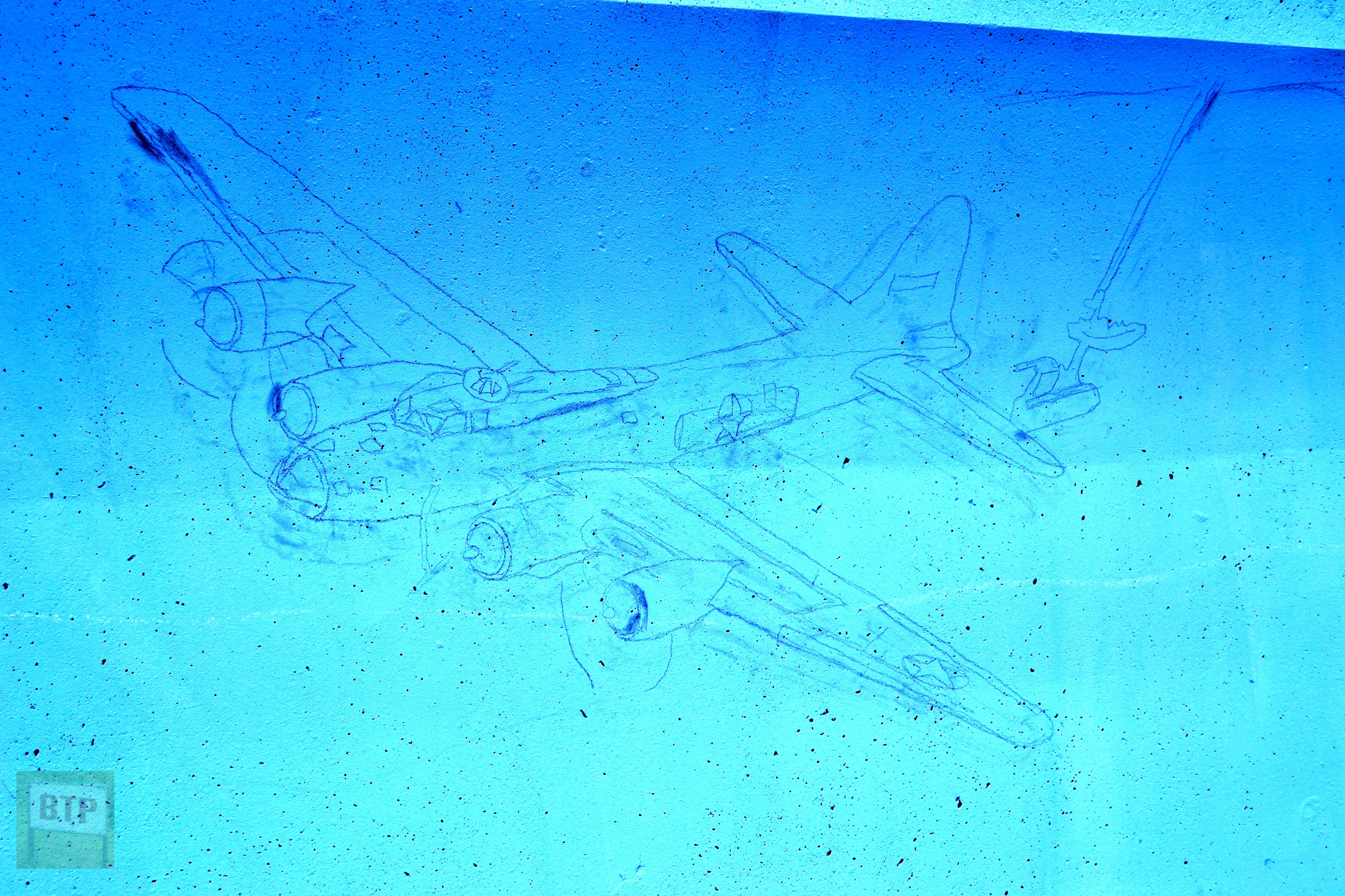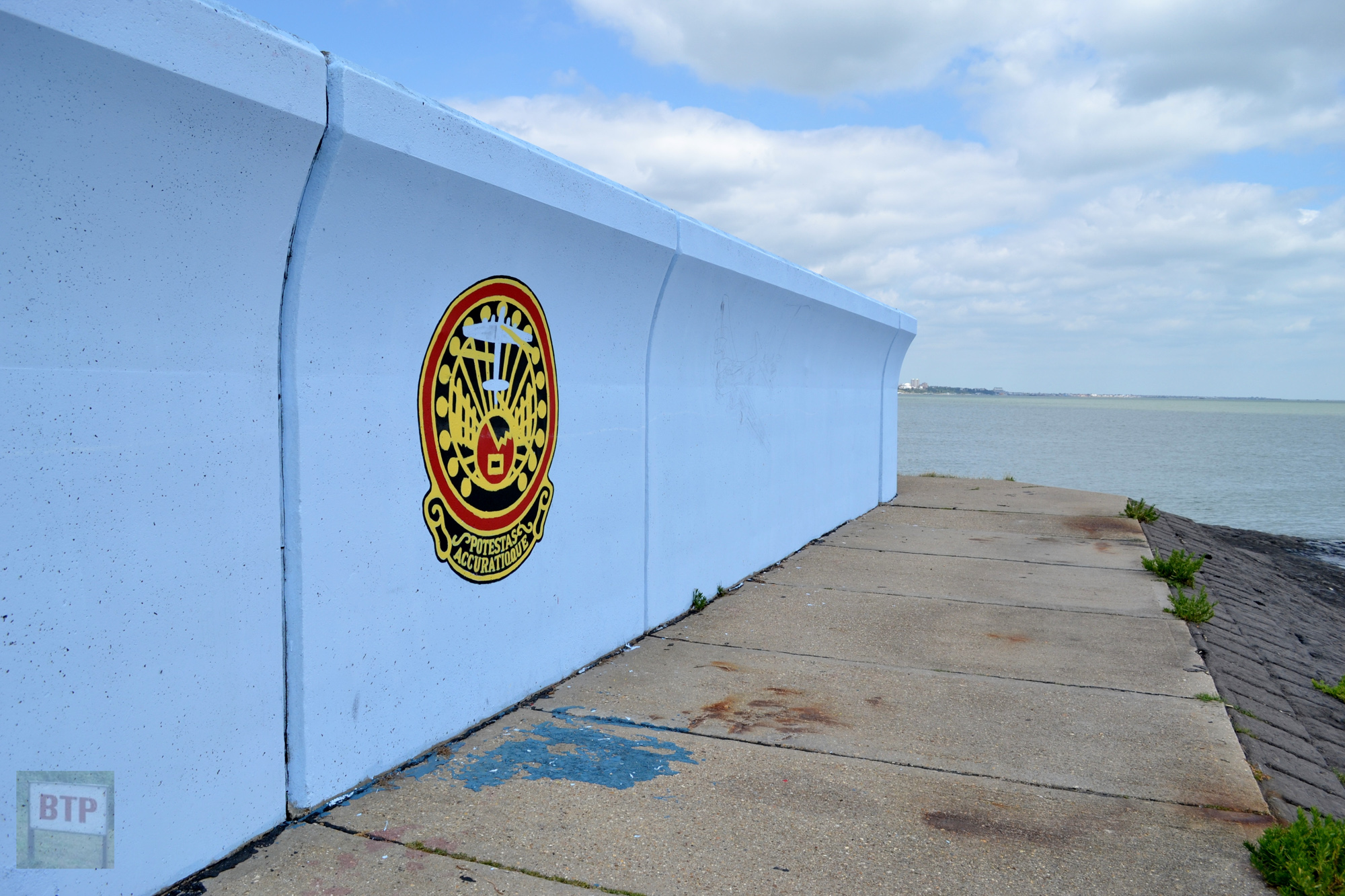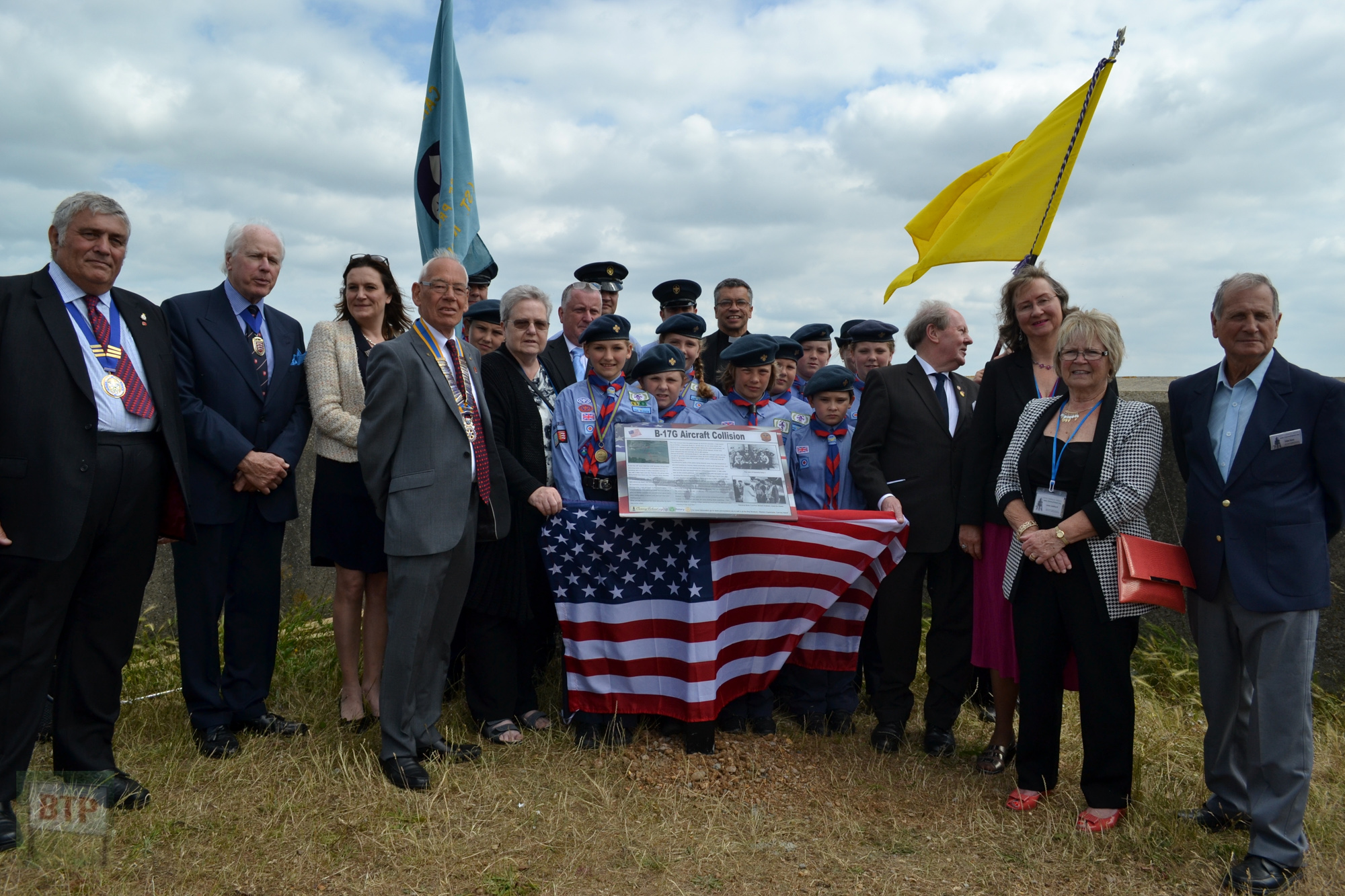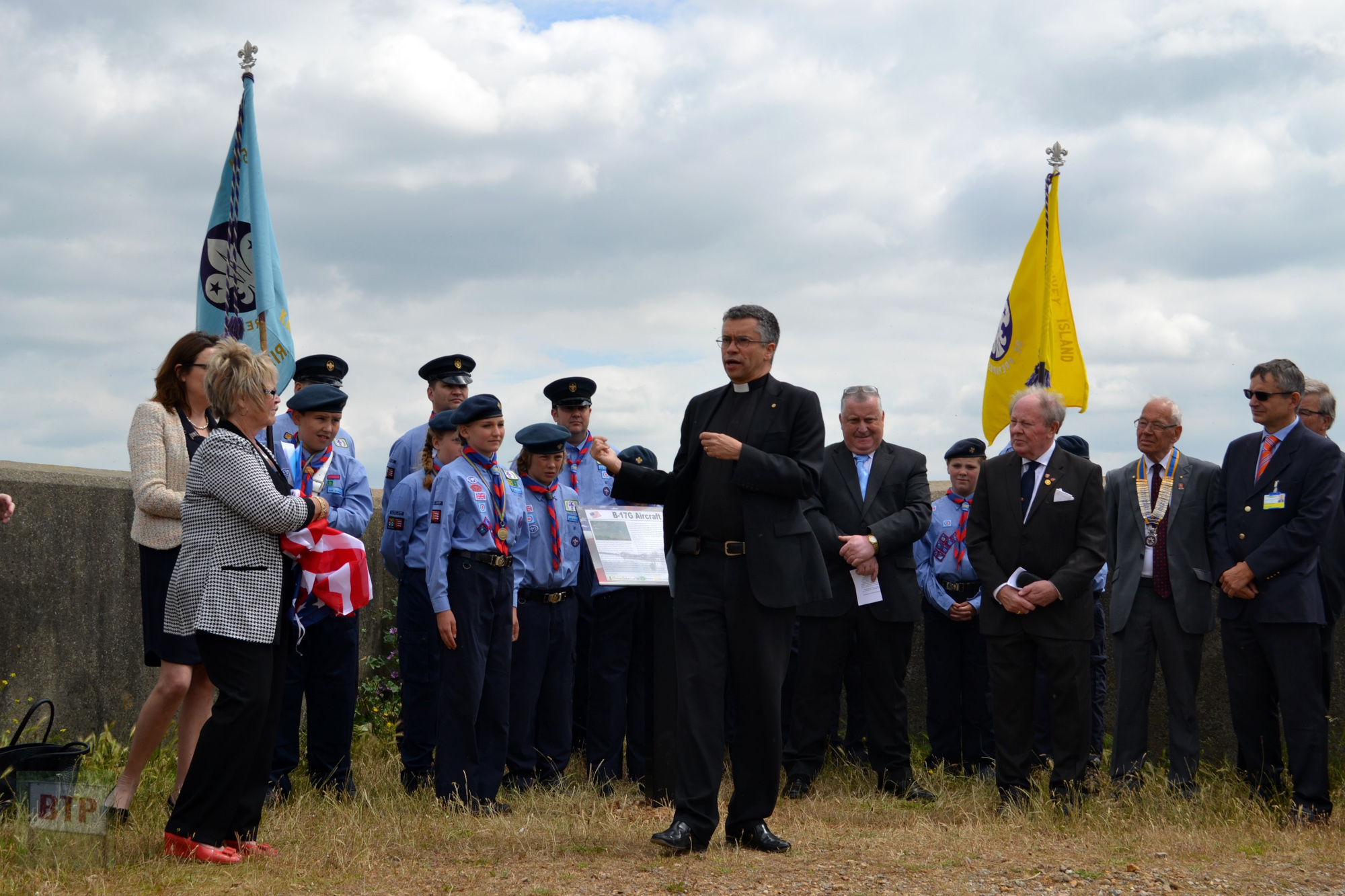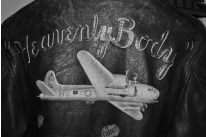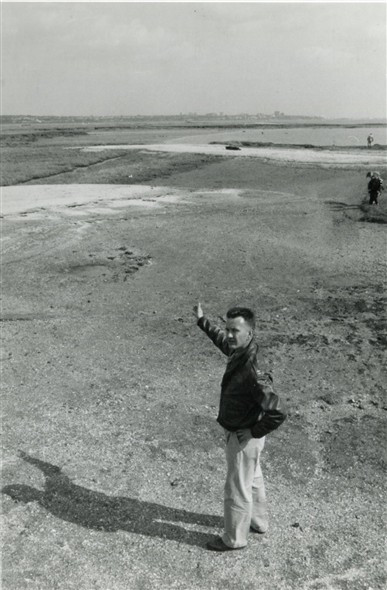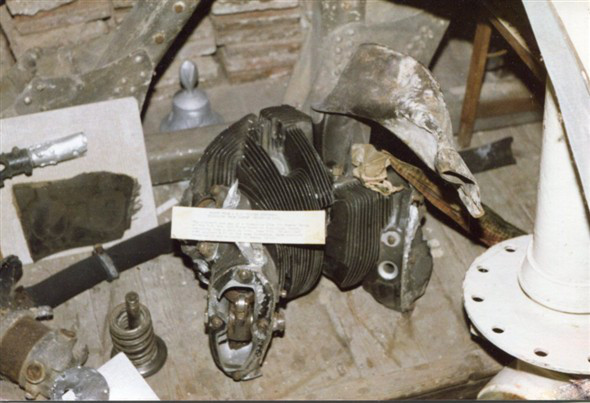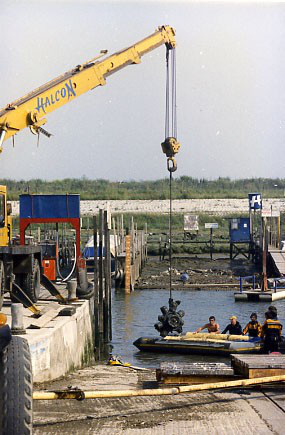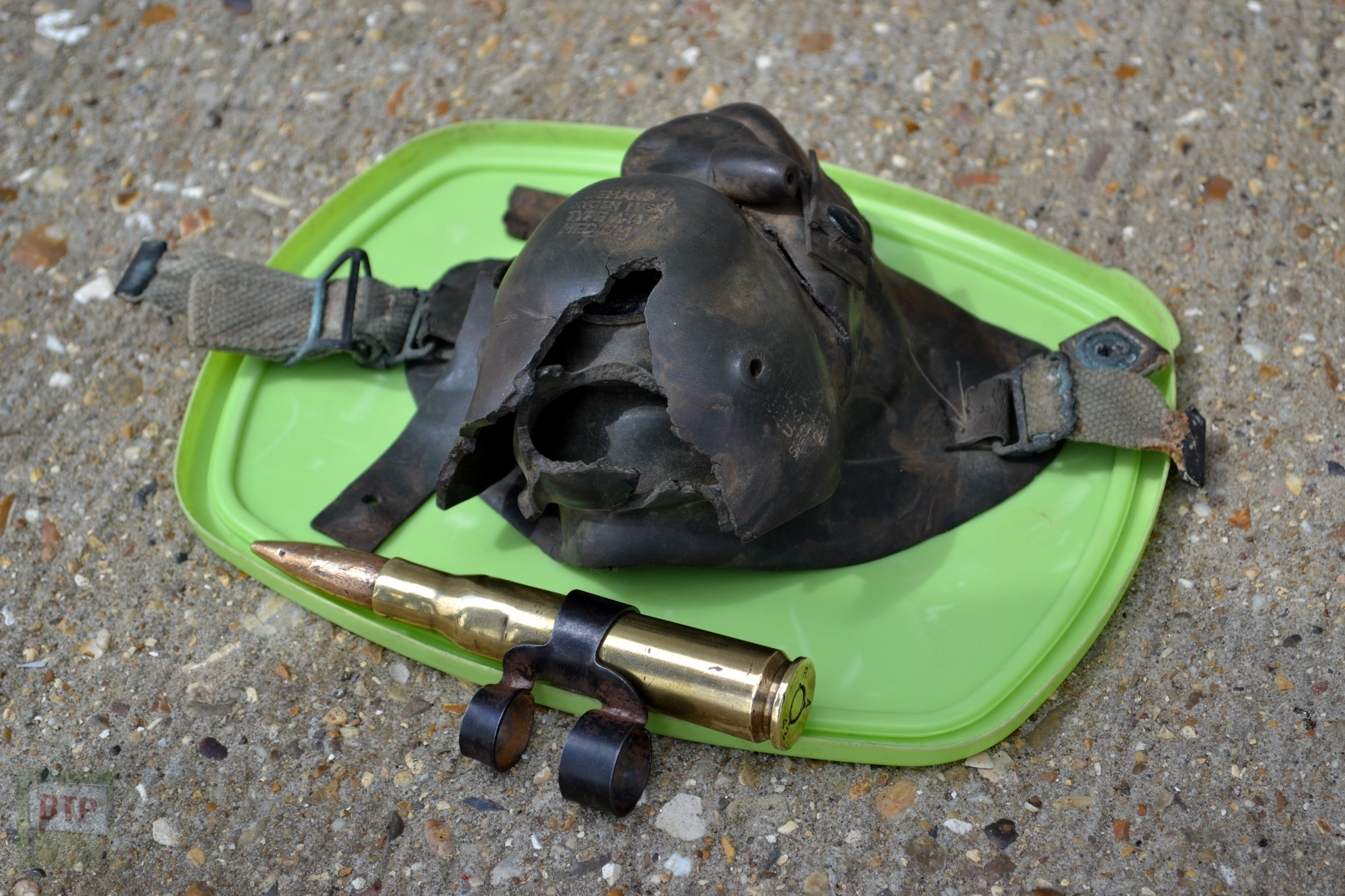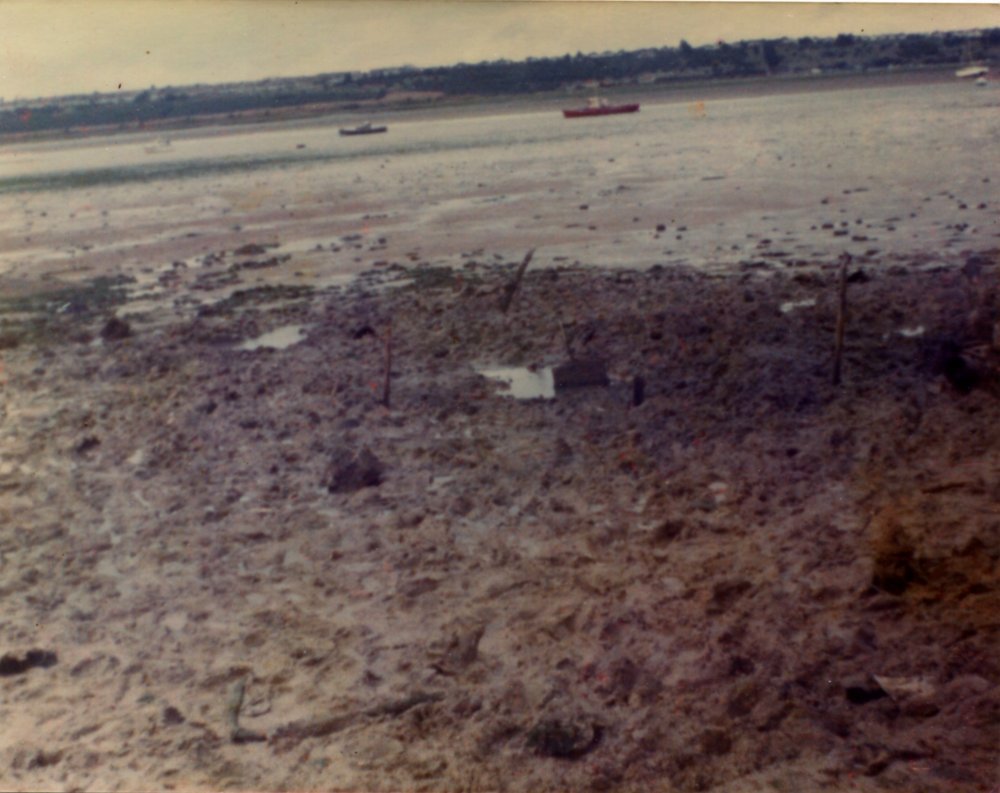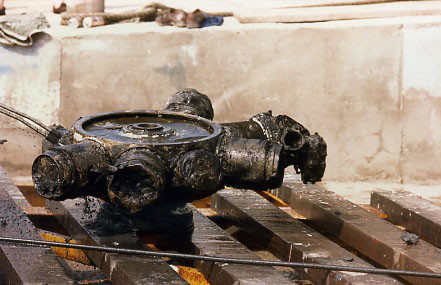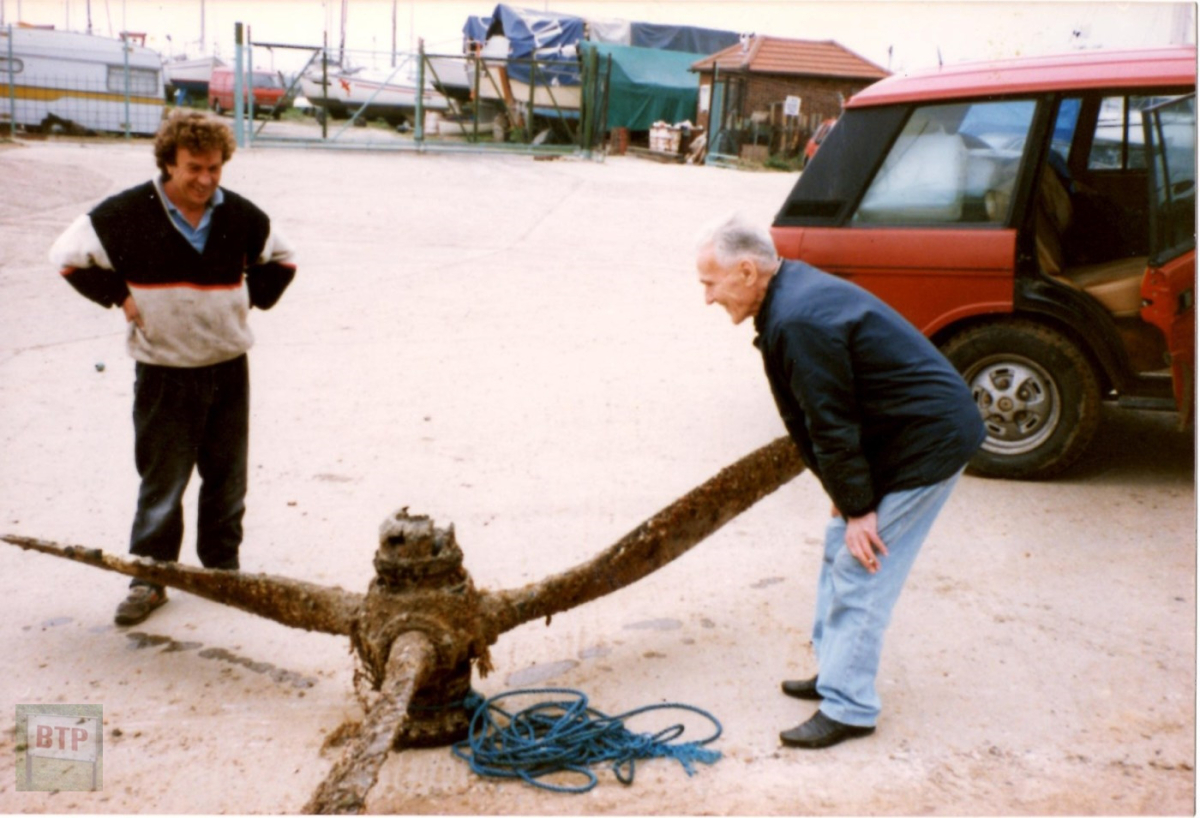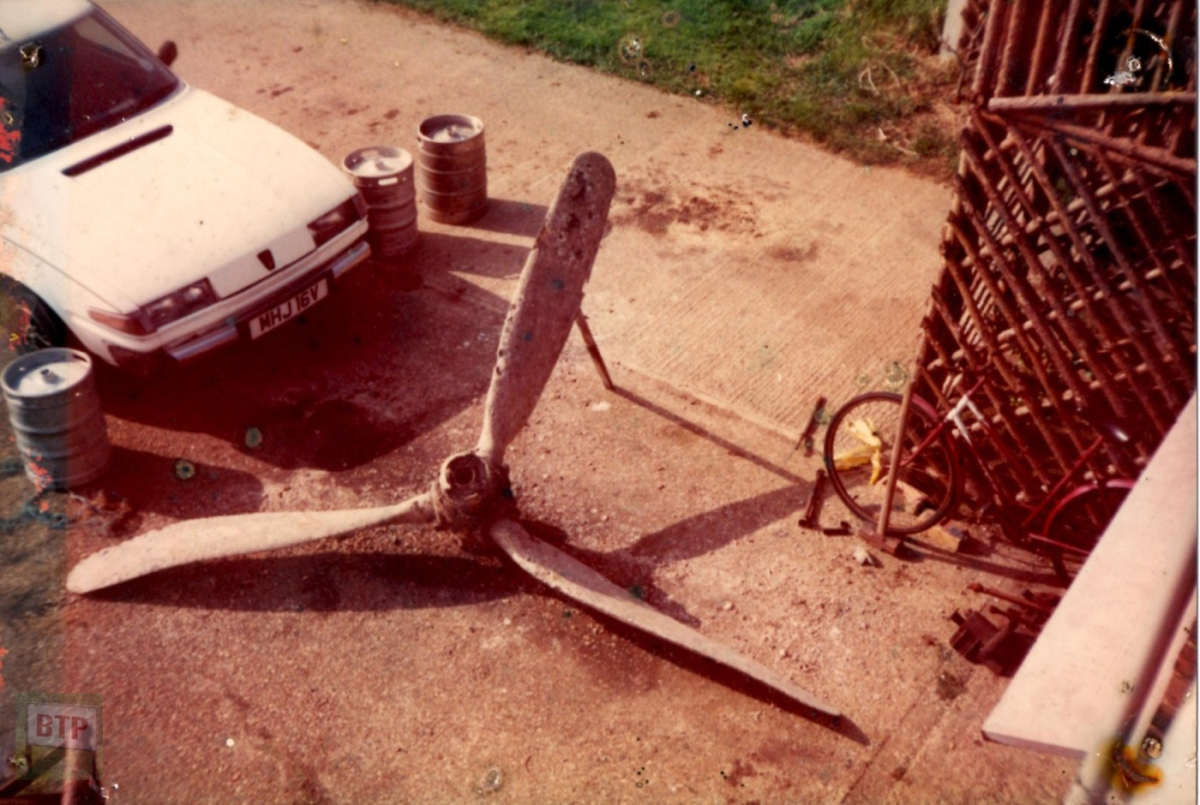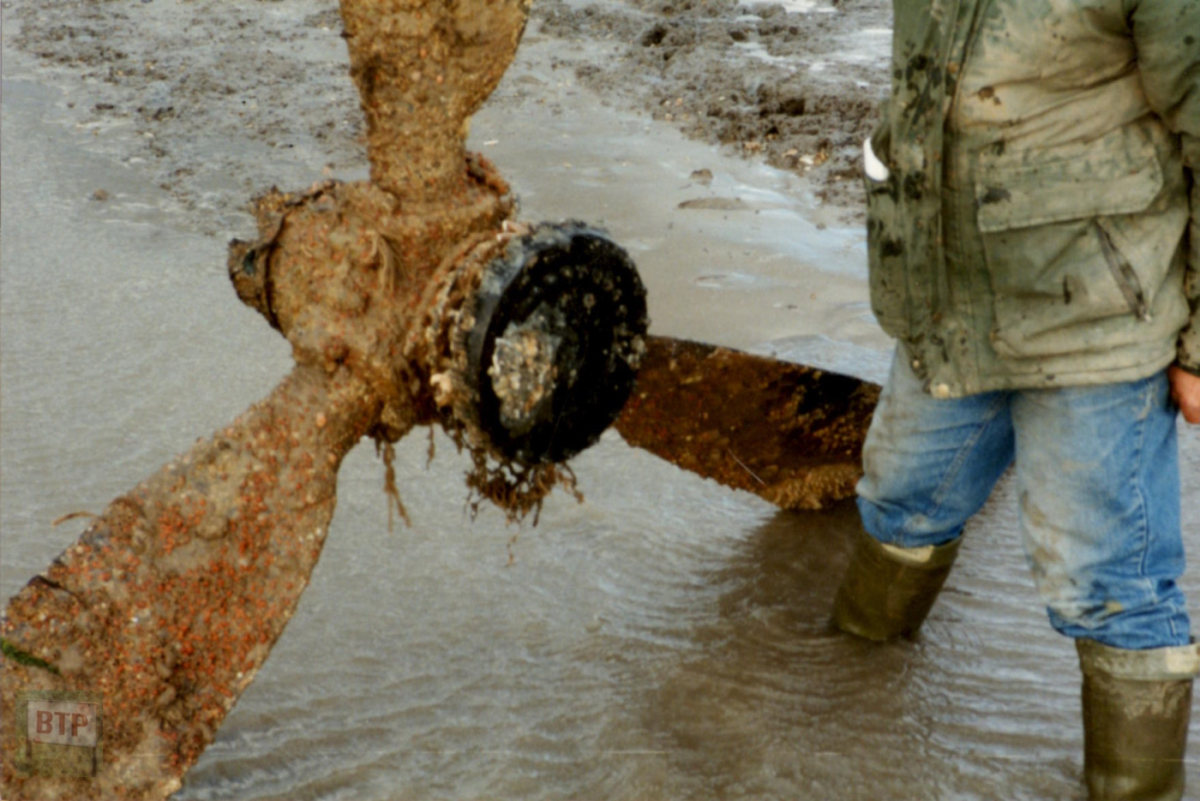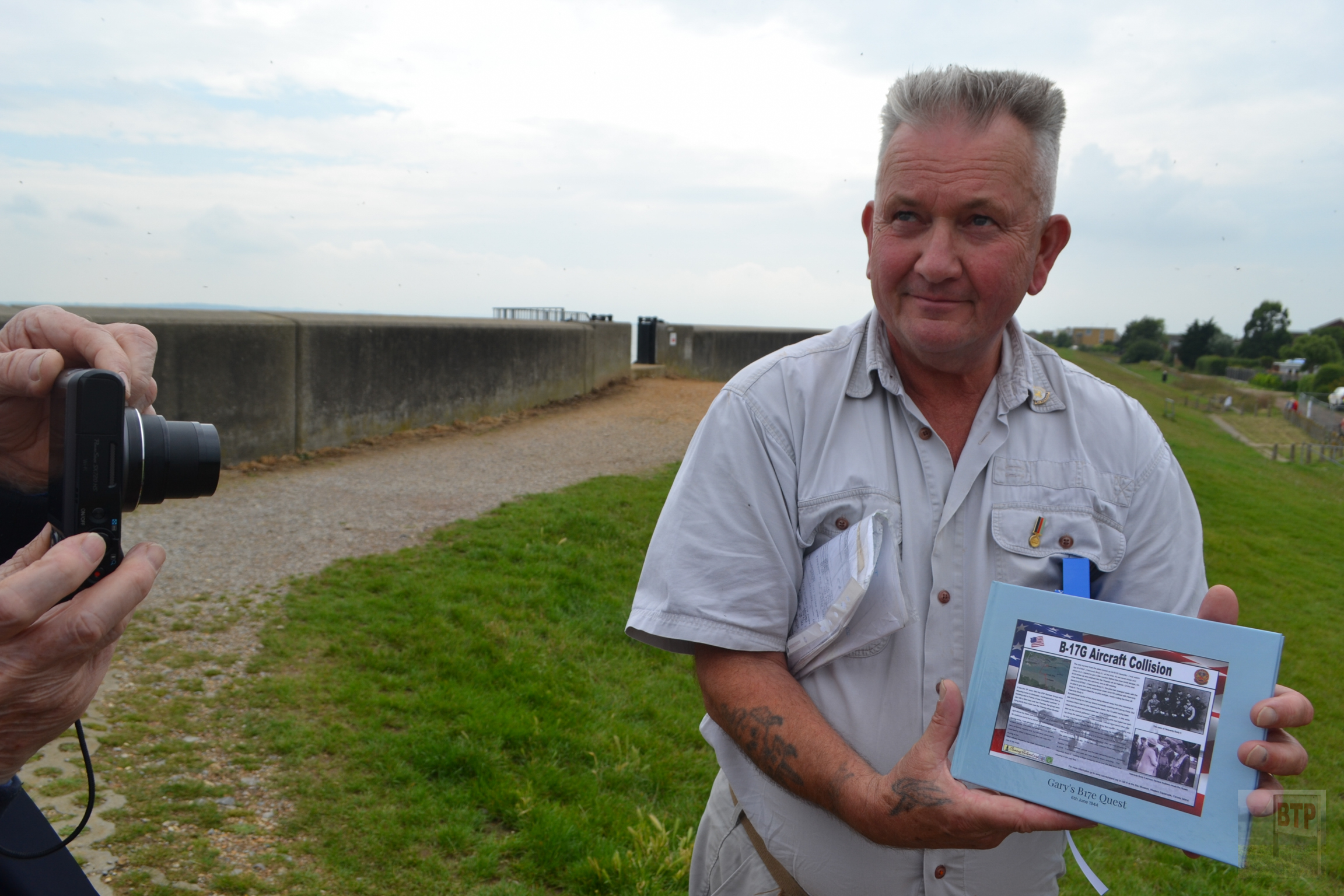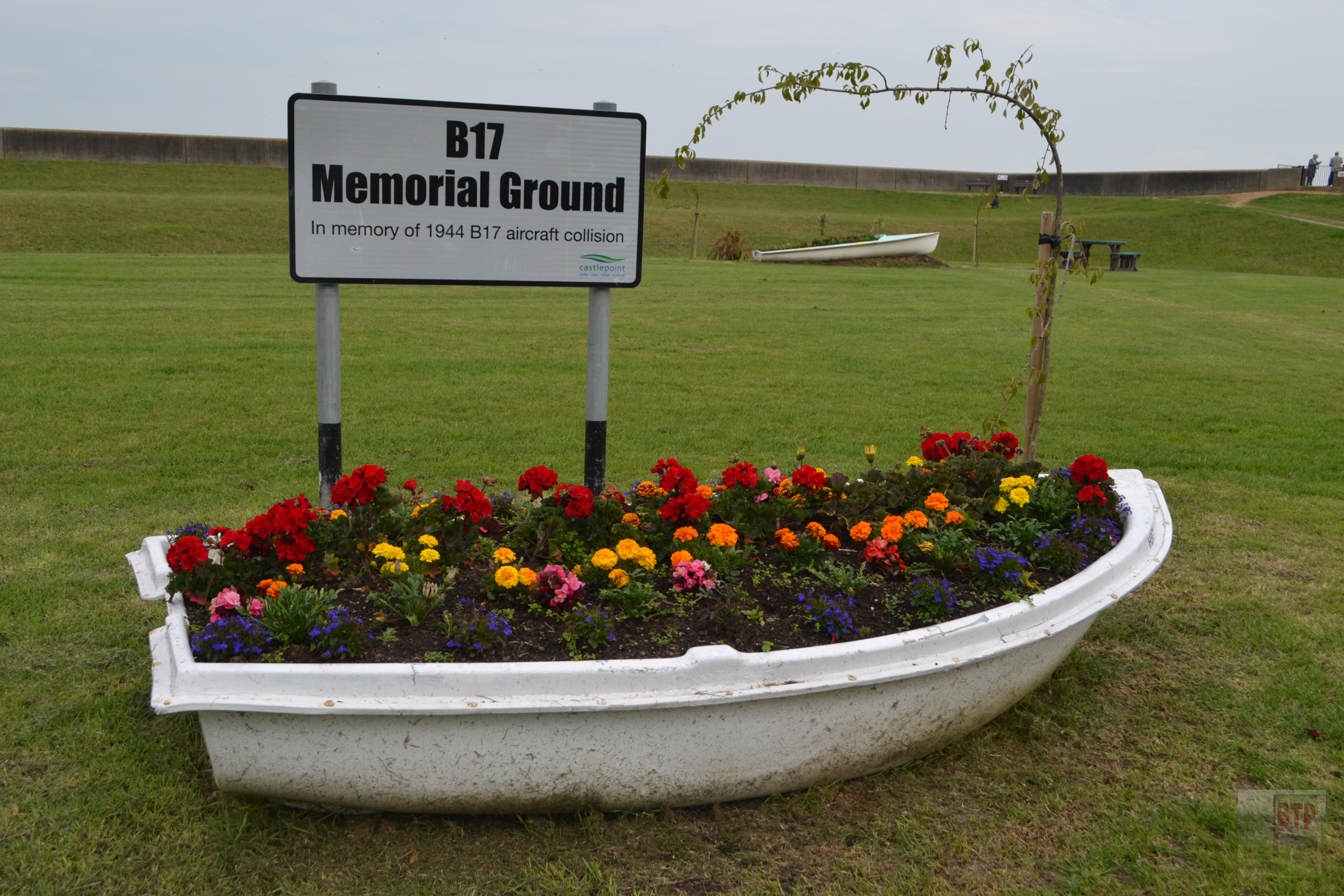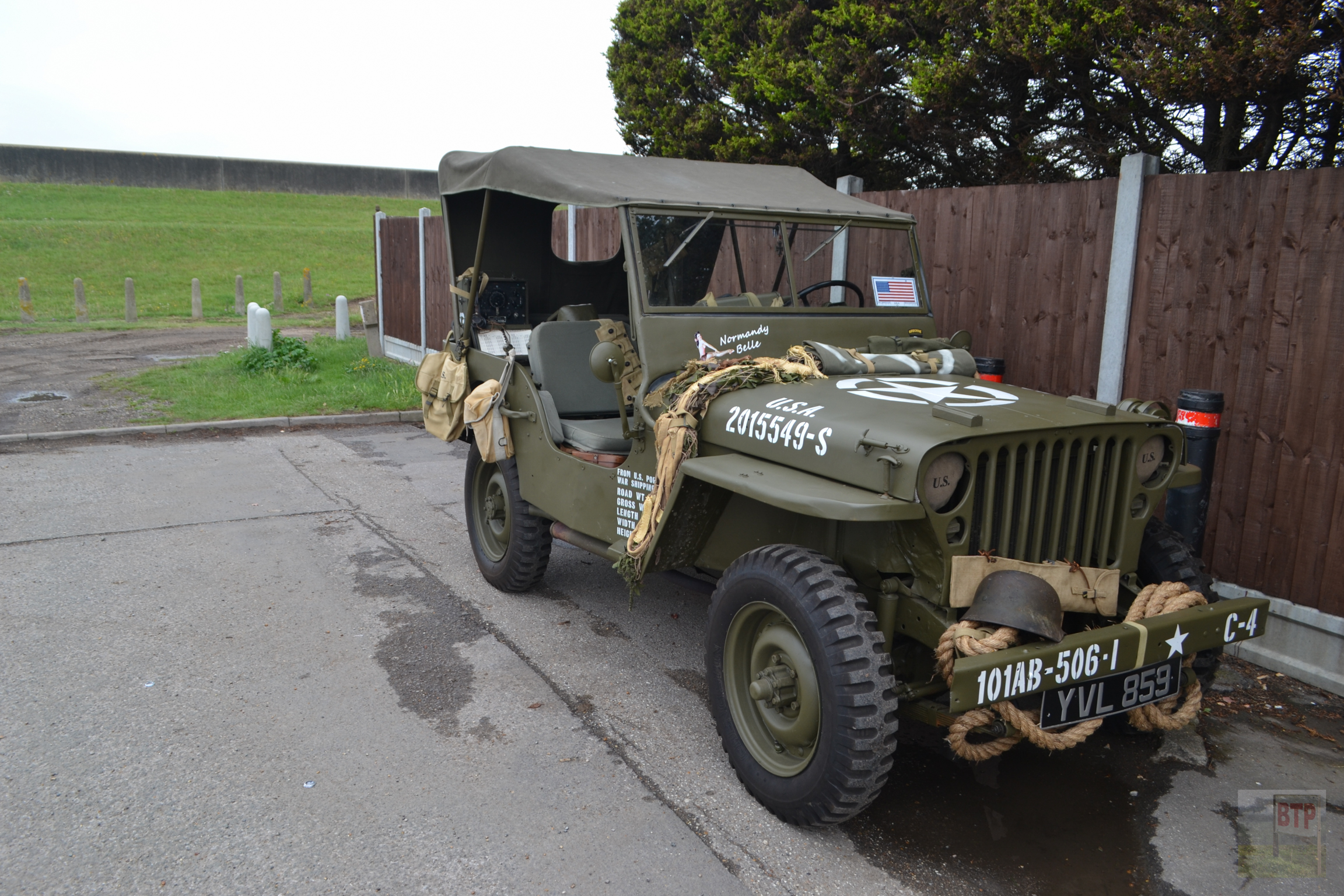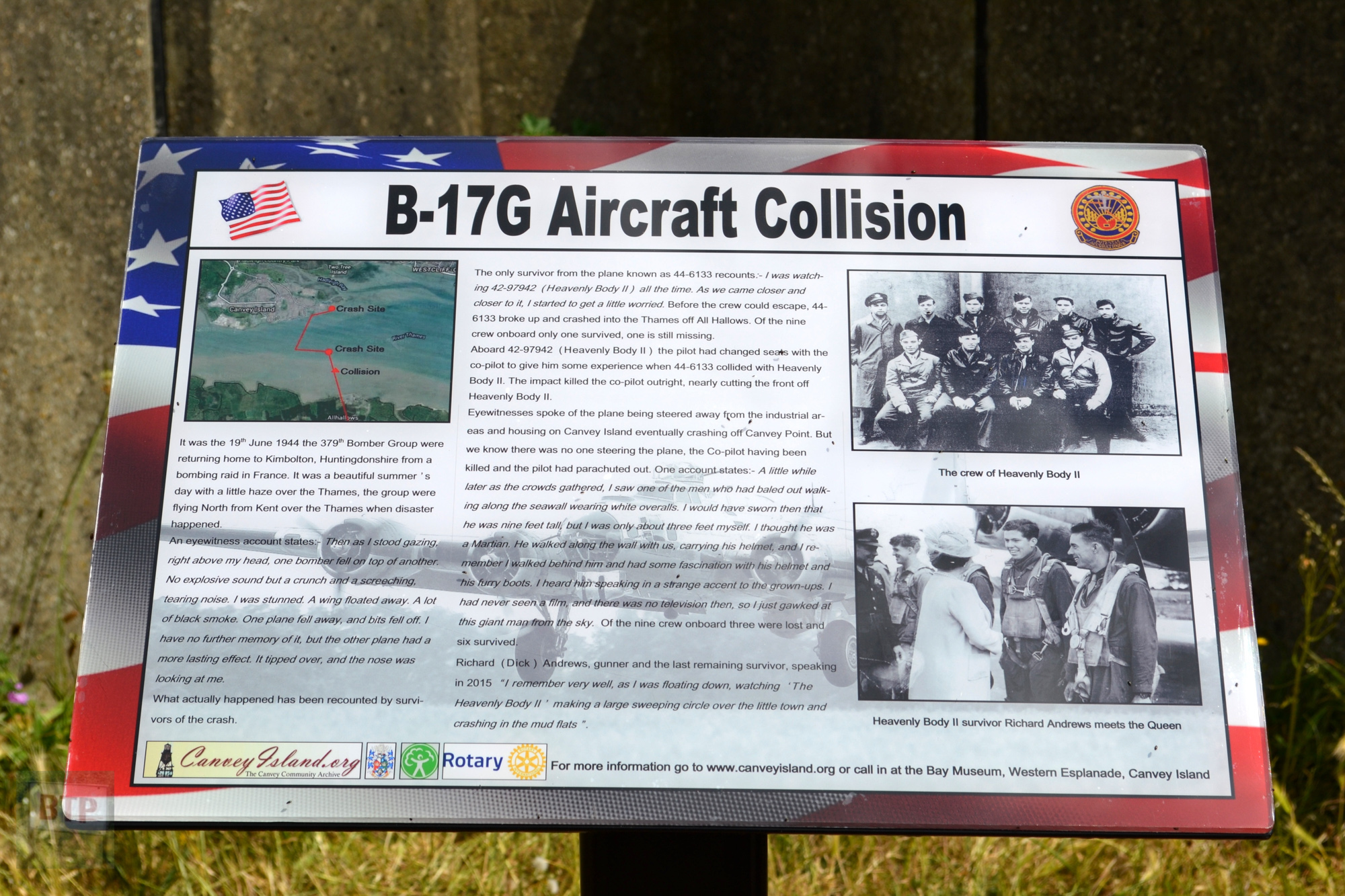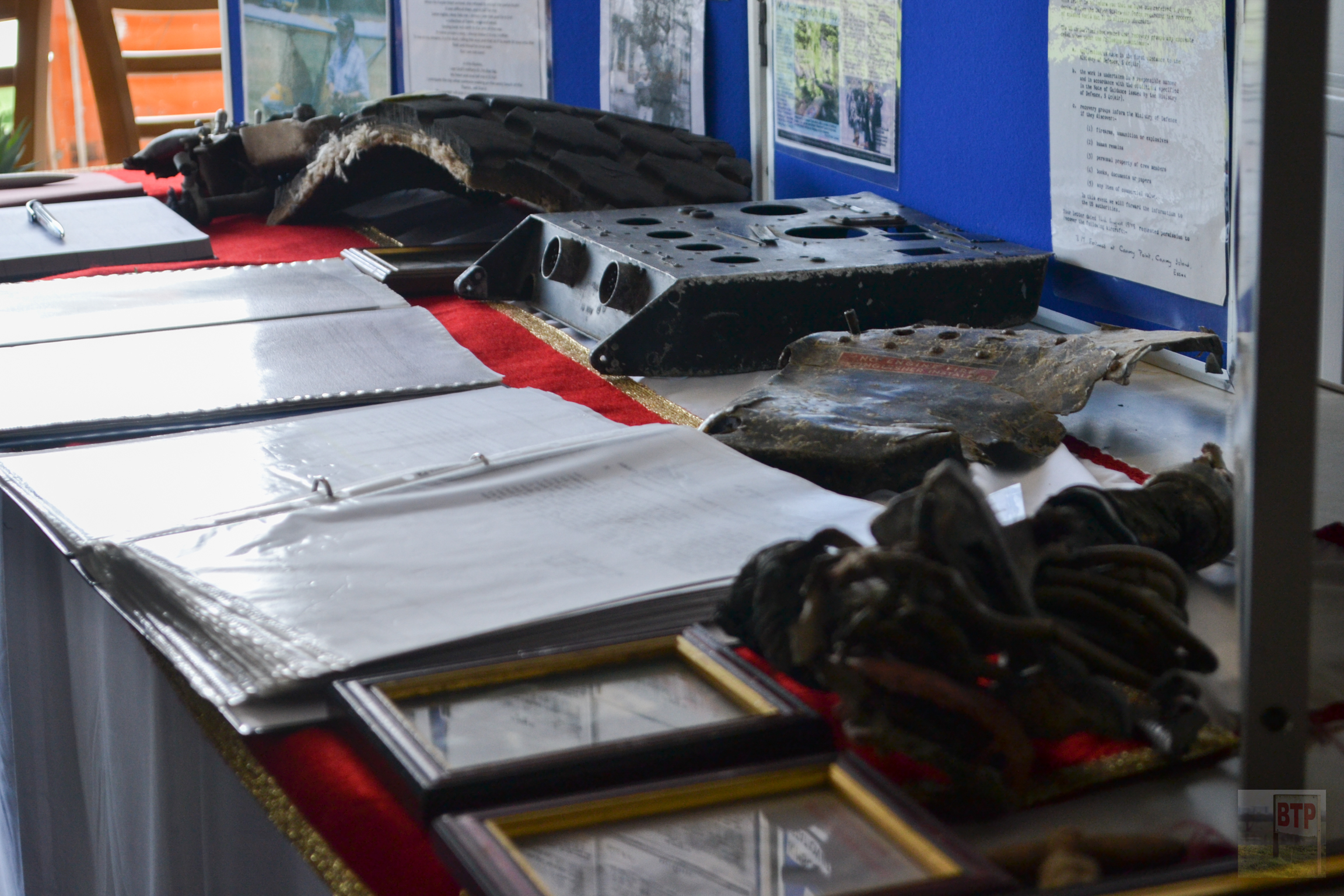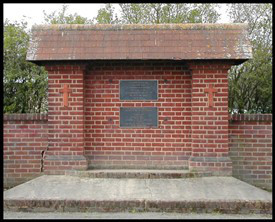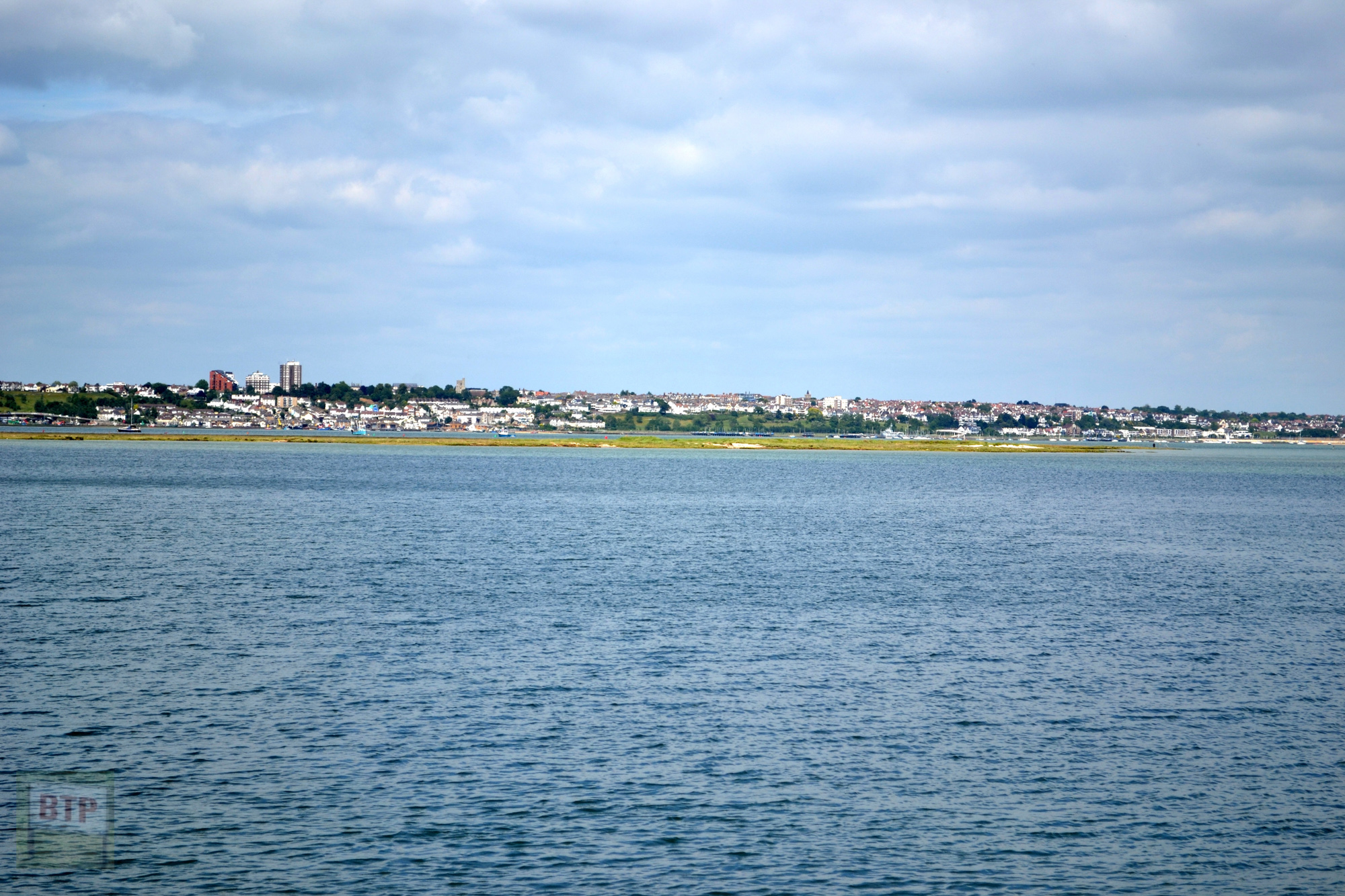The Canvey Archive has a large collection of memoirs, photographs, and on the crash please see here: http://canveyisland.org/category/world_war_ii_b-17g_aircraft_collision and a booklet detailing the events from ‘See History’ they is here: http://canveyisland.org/documents/DHB_v2_Med_Res.pdf
On the 19th of June 1944 a formation of B17 Flying Fortress American bomber planes were heading back to their base in Kimbolton, and it was pilot Lt. Lloyd Burn’s 29th mission. The Heavenly Body II was the new plane he was meant to be flying that day, although co-pilot Lt. Fred Kauffman asked to have a go at flying and Burns let him do so for practice. Another of the B17s began to lose control as one of its engines failed after being shot at on the mission they were returning from over Zudausques where they had to take out a V1 Doodlebug launch site. It began to fall and crashed ontop of the Heavenly Body II, killing Lt. Kauffman in the pilot’s seat instantly. When Burns tried to take over the found the controls had no bearing on the behaviour of the plane, and they had to bale. Many of the crew ejected, but Edward Sadler was killed and Louis Schulte drowned upon hitting the water. There were many more casualties in the other craft that crashed in the Thames near All Hallows, because the escape exit had become damaged and wouldn’t open.
Uncovering the Wreckage
It is worth noting that respect for archaeology and history hasn’t always been widely-viewed as commonplace in the way it is today, and it is only in more recent times that conservation has been a universal concern hence why very little attention was given to the wreckage immediately after wartime. Until the 1970s and 80s much of the wreckage had remaining sticking out of the mud at Canvey Point simply because much of it was left without any action; with parts claimed as scrap rather than for its importance. At this time Canvey Islander Gary Foulger was one of the first to resurface and raise awareness of this dreadful tragedy that had previously been put to the back of the minds of the locals alive to witness the crash first hand.
Photographs from Ian Hawks, Shirley Gartshore, and Gary Foulger can be seen left of the recovery of the remains.
Remembering the Sacrifice
The crash was commemorated in a plaque at the Paddocks on Canvey down Long Road as a result of Gary’s investigations. It was upgraded recently.
On June the 19th 2015, exactly 71 years after the crash, an information board was erected on the seawall near Canvey Point educating passers by on the price the crew paid to liberate the future. Personally I believe this is an excellent display which I would like to see more of for more lesser-publicised sites of historic and cultural significance, as now the heroes of the Heavenly Body II and their peers have been immortalized in a physical reminder for the public to see. The local sea scouts stood at the plaque alongside Ray Howard and the Reverend David Tudor who both gave a speech. Messages from the families of the crew were read out by Geoff Burke. See them here:http://www.canveyisland.org/page/messages_from_the_b17_families The MP Rebecca Harris attended, and Allan Reed and David Thorndike of the Bay Museum too were present at the unveiling. Afterwards we went to the Yatch Club adjacent and had tea alongside displays from the Bay Museum showcasing some of the remains and the story of the crash.
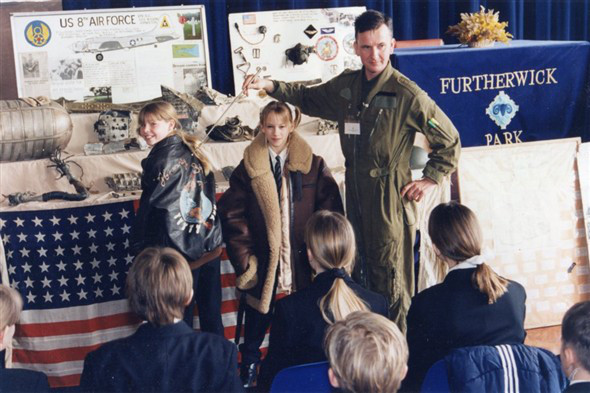
Gary and his two daughters demonstrating the jackets to Furtherwick Park School
75th Anniversary
A very poignant memorial service occurred at Canvey Point’s new B17 Memorial Ground dedicated to those involved in the crash of the American B17 Flying Fortress on a mission to bomb V1 sites on the continent 75 years ago. The crash was first uncovered and excavated by Gary Foulger and the event was attended by himself alongside other dignitaries, as well as the families of the B17 crew survivors and casualties who had made a special trip across the pond. We plan on visiting the crash site soon in one of our upcoming videos.
